





ANGELA GRIEB

DRAIN
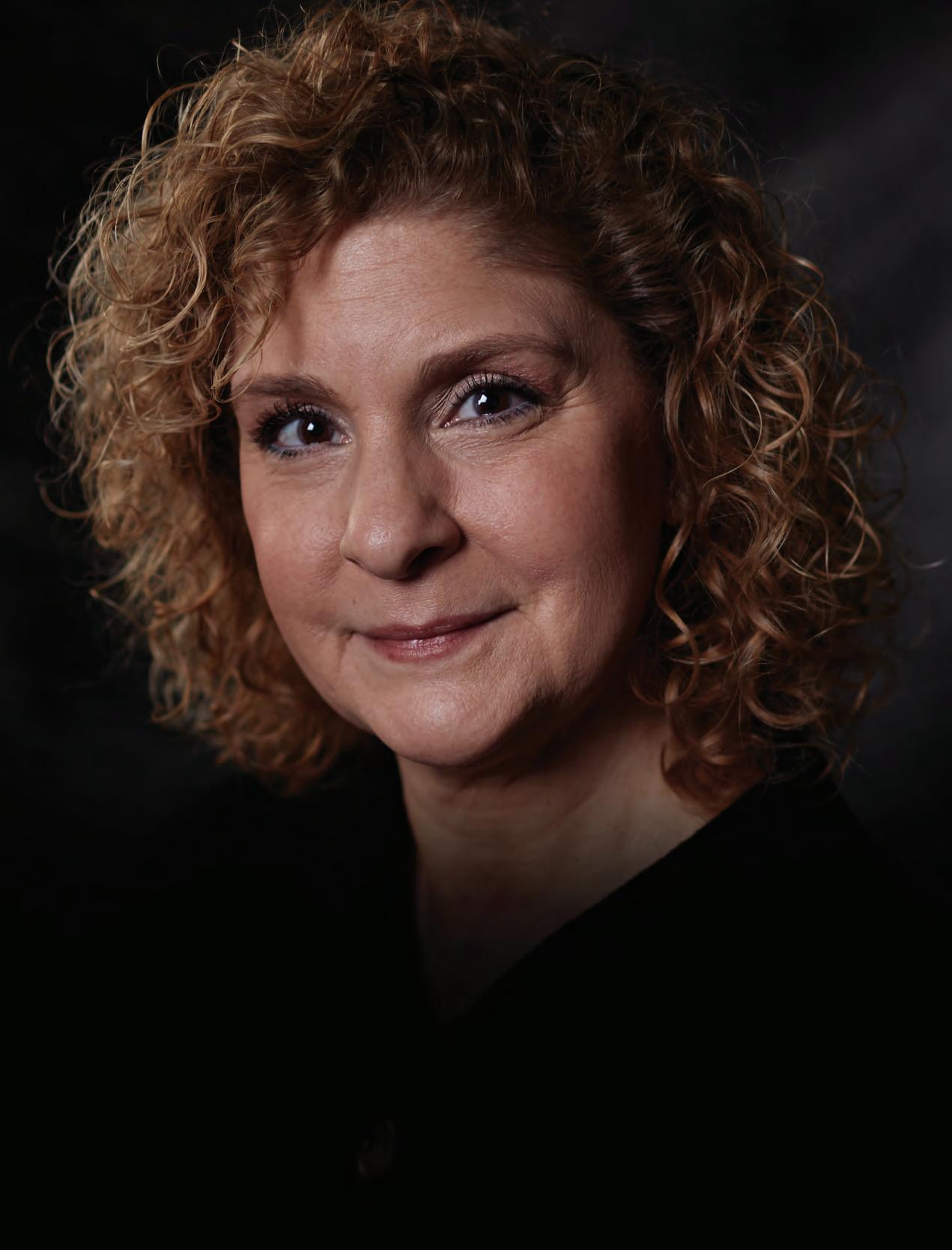





66COVER STORY
Blue Rodeo is setting out on its tour to commemorate 40 years of creating original music − something Cuddy plans to keep doing for a long time. Kerry Turner
29WET HEAT SUPPLEMENT
Check out the second 2025 issue of the semi-annual Wet Heat Applications & Technology. In addition to showcasing products, content in this supplement will help readers make better decisions, solve problems faster, and design systems that perform more reliably.
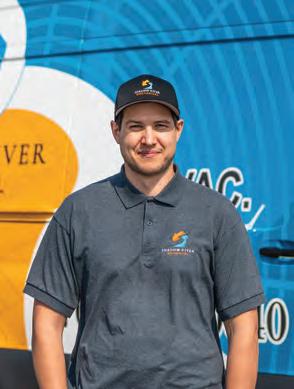
Carolyn Cooper


Test your knowledge of hydronic terminology for a chance to win a Yeti cooler from Nibco.

70INDOOR AIR QUALITY
Mould, commercial buildings and mechanical systems: Mitigating risks
Regular maintenance, early detection and quick remediation can reduce the threat.
Jim Mandeville
72GEOTHERMAL
Ontario Geothermal Association Conference marks a turning point
Attendees were encouraged by the growing clarity, confidence, and coordination within the industry.
Jeff Hunter
Ontario announces funding and measures to protect skilled workers
Government proposes amendment requiring AEDs at construction sites.
Carolyn Cooper
84MANAGEMENT
Unlocking business revenue
Smart consumer financing immediately removes the payment barrier.
Roland Ligtenberg



20 HIGH-PERFORMANCE HVAC
Heat pump retrofits in rental buildings
Tom Grochmal
Technology can solve a multitude of problems in old apartment buildings.
32 HYDRONICS
Get up to speed on moving fluid
Bob “Hot Rod” Rohr
A lot has changed and improved recently in the circulation world. Make sure you are keeping up, says Hot Rod.


42 HYDRONIC PIPING
Design rules to live by Matthew Reid
Appearances can be deceiving when it comes to boiler piping − follow some very simple rules to optimize performance.
62 PLUMBING
Restoration yields lessons in heating and plumbing history
Fred Bretzke
Each mechanical task addressed in the old house came with its own set of challenges.


80 MARKETING
Recession-proof your marketing strategy: Stay visible, keep growing Paul Bies
Businesses that thrive in uncertain times lean in and invest.
REFRIGERATION
Mike Squires returns next issue.
Western Canada
Available across Canada at these fine distributors
Available across Canada at these fine distributors these fine distributors
Ontario
Western Canada

Western Canada
Ontario
Quebec Western Canada
Ontario
Ontario
Ontario
Quebec
Quebec
Quebec
Atlantic Canada
Atlantic Canada

Quebec
Atlantic Canada
Atlantic Canada
Atlantic Canada
Content Media Group Inc.
2 Campbell Dr., Suite 807
Uxbridge, ON L9P 0A3
Tel: 905.465.2919 www.mechanicalbusiness.com
July/August 2025 Issue
Published 6 times per year.
Circulation Director: Shila Naik, C 905-272-4175 shila.naik@mechanicalbusiness.com
Editor:
Kerry Turner, C 416-435-1193 kerry.turner@mechanicalbusiness.com
National Sales Manager: Kyle Badder, C 416-735-1375 kyle.badder@mechanicalbusiness.com
Operations Manager: Caroline Bexfield, C 647-217-2076 caroline.bexfield@mechanicalbusiness.com
Contributing Editor: Carolyn Cooper editorial@mechanicalbusiness.com
Art Direction: Fourteen Orange Graphic Design Inc. davem@fourteenorange.com
Controller: Liz Mills liz.mills@mechanicalbusiness.com
Publisher: Bruce Meacock, C 416-457-9563 bruce.meacock@mechanicalbusiness.com
PM:41536047
ISSN 1916-0674 MB (Print) ISSN 1906-0682 MB (Online)
Proudly created and printed in Canada.
We acknowledge the support of the Government of Canada.

Submissions: Copyright in material submitted to the magazine and accepted for publication remains with the author, but Mechanical Business and its licensees may freely reproduce it in print, electronic or other forms. Mechanical Business also reserves the right to edit said submitted materials to suit the editorial needs and mandate of the publication.
Notice: Mechanical Business is published for owners, managers and decision makers with mechanical contracting firms and the sector’s supply chain partners in Canada. While every effort is made to ensure the accuracy of the information, Mechanical Business, Content Media Group Inc., its staff, directors, officers and shareholders (‘The Publisher’) assume no liability, obligation or responsibility for advertised claims, for errors and/or omissions, or for the results obtained from the use of this information. Manufacturers’ instructions take precedence over published editorial. The publisher reserves the right to publish a printed correction in a subsequent issue for editorial errors, omissions and oversights. Subscriptions are available for $90 plus taxes in Canada and the U.S. Single copies are $15.00. Outside Canada and the U.S., the rates are $150.00 (annual) and $25.00 (single copy).
© Copyright 2025. The contents of this magazine may not be reproduced in any manner without prior written permission of the publisher.

Proud members of:


By Carolyn Cooper
ACORN Canada (The Association of Community Organizations for Reform Now) has published a report revealing that just under half of low- and moderate-income tenants do not have access to air conditioning.

The report, “Crumbling Apartments in a Warming World: Tenants in an Energy Cost Crisis,” was based on a survey of renters in cities across Canada. It included respondents from low-, mid- and high-rise buildings, about 65 per cent of whom were living in buildings built before the 1980s. The most common type of heating system in these buildings was boilers with hot water or steam radiators. Fortyfour per cent of respondents said they did not have access to air conditioning, with 46 per cent citing cost as the reason.
At the same time, only nine per cent of respondents said they were not impacted by extreme heat. Poor sleep (74 per cent), fatigue (66 per cent), and headaches (48 per cent) were the top three cited ways in which respondents said they were impacted. Other impacts included inability to complete tasks or concentrate, heat stroke, and nausea. Of the respondents who had access to air conditioning, 41 per cent had floor/portable units, and 36 per cent had window units. In addition, 39 per cent paid additional costs for air conditioning, with 23 per cent paying between $100 and $300 extra.
Of those who had air conditioning, 61 per cent had it in just one room, while 22 per cent had it in two rooms. Maintenance issues were also found to contribute to uncomfortable temperatures in rental units, with one-third of tenants rating their units bad or very bad. Issues cited by tenants included too hot in summer (54 per cent), inability to control the temperature of the unit (33 per cent), too cold in winter (29 per cent), and drafty windows (33 per cent).
Health issues reported coming from this discomfort included headaches, aggravation of health issues, and respiratory issues. Only 19 per cent of tenants reported that energy efficiency repairs had been done in their building, with LED fixtures, boiler replacement, and new windows and doors cited the most often. Of those who reported these repairs, 54 per cent said the repairs were not helpful, and 34 per cent had rent increases. In addition, 62 per cent said they were somewhat or extremely concerned about rent increases due to energy efficiency repairs.
ACORN Canada is a membership-based community union of low- and moderateincome people.
acorncanada.org










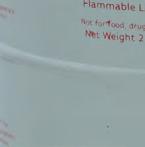



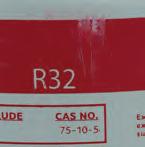
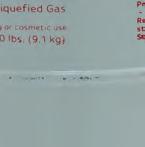





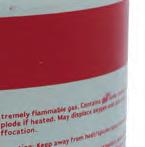









Wolseley Canada has created 21 bursaries for post-secondary schools across Canada. The financial need-based bursaries range from $750 to $2,000, and will help offset the cost of skilled trades education programs. Programs related to the plumbing and HVAC industry will be prioritized. The bursary program will focus on the provinces Wolseley has identified as having the greatest skilled trades shortages, based on customer feedback through its coast-to-coast branch network. As a result, BC will receive three bursaries, Alberta and Ontario will each receive six, and Saskatchewan, Manitoba, Quebec, New Brunswick and Nova Scotia will each receive one bursary. wolseleyinc.ca
Canada Infrastructure Bank (CIB) is expanding its Building Retrofit Initiative through a $100-million partnership with Scotiabank to finance deep energy retrofits across Scotiabank’s commercial real estate clients. The collaboration will allow owners of commercial, industrial, office and multi-residential buildings to access low-cost, flexible financing for upgrades that cut energy emissions by a minimum of 30 per cent. Scotiabank will administer the loans for the partnership.
cib-bic.ca scotiabank.com
The Air-Conditioning, Heating, and Refrigeration Institute’s (AHRI) Infrared Heaters Standards Technical Committee has approved a Canadian Project Initiation Form, a Canadian Interest Form, and a Canadian Standard Work Group chair, scope, and roster to pursue a National Standard of Canada (NSC) designation for AHRI Standard 1330-2024 (SI). The standard, Performance Rating for Radiant Output of Gas Fired Infrared Heaters, establishes definitions, nomenclature, and test, rating and data requirements for published ratings, marking and nameplate data, as well as conformance conditions for infrared heaters. The Canadian Standard Work Group will use the AHRI standard without modification.
ahrinet.org
Light House is inviting businesses involved in BC’s construction sector to apply to its complimentary 2025/2026 Circular Construction Accelerator (CCA) for support in developing and scaling technologies relating to a circular cleantech economy. Eligible businesses can access support and industry resources, helping them to identify funding and partnership opportunities, research market trends, source materials, and develop products and bring them to market. Light House is an environmental services company based in Vancouver, BC that works with building owners and developers, construction professionals and contractors to design communities and buildings that reduce and reuse building materials, waste and carbon emissions. light-house.org

The Government of PEI has updated its NetZero and efficiencyPEI rebates. Residential rental property owners can now apply to receive the same rebates as homeowners. The update also offers a 40-per cent increase in rebates for home insulation, windows and doors. However, heat pump rebates for eligible residential properties will go from $1,200 to $900 per mini split, and from $2,400 to $1,800 for lower income families. There will also be a change in incentive rate and a cap of $5,000 for solar panels on residential properties. Rebates for other energy efficiency equipment will remain the same. In addition, new client intake for the Net Zero Free Programs and the Oil to Heat Affordability Program was paused as of June 2, 2025 due to high demand. To be eligible for rebates, all heat pump services must be provided by a Network of Excellence (NoE) contractor, and solar PV systems must be installed by an approved solar installer on the NoE. Contractors interested in joining the NoE can contact efficiencyPEI at efficiencypei-noe@gov.pe.ca. princeedwardisland.ca
kHigh-efficiency 800 GPD membrane (2:1 purified to drain ratio)
kWhisper quiet performance
kLeak alarm with auto shut-off
kFilter life Indicator Lights
kQuick change filter cartridges – dealer exclusive sales, no online substitutes
kUnique 3 in 1 Sediment, Pre/Post Carbon Filter


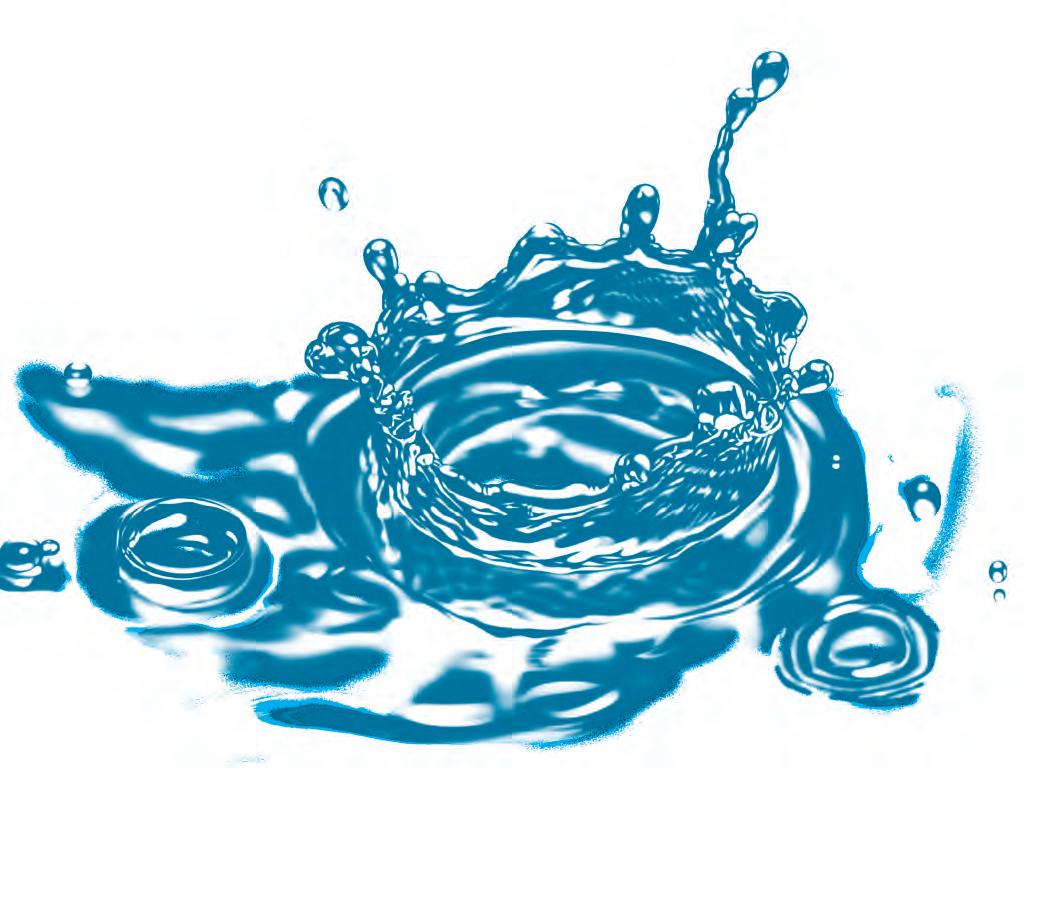












Google’s Nest has announced it will discontinue support for its first and second generation smart, WiFi-enabled Learning Thermostats. As of October 25, 2025, the thermostats will no longer connect to or work in the Google Nest app or Google Home app. Third-party assistants and other connected features such as Home/Away Assist will also no longer work. The thermostats can still be controlled directly through the device, and other features and settings on the unit, such as pre-set schedules and switching between temperature modes, will continue to work. The Nest app will also help users confirm the model, serial number and software version of thermostats. support.google.com/googlenest

The Canadian Water Quality Association (CWQA) presented the inaugural Donald G. Fettes award to Don Fettes, president and CEO of Canature WaterGroup, during its recent annual general meeting and conference. The award recognizes individuals who have supported and built up the water industry in Canada. Regina, SK-based Canature WaterGroup sells residential and commercial water conditioning equipment to plumbing and heating wholesalers and independent water dealers. canaturewg.com

Royal Bank of Canada (RBC) has begun its multiyear initiative to retrofit its 1,200-branch network across Canada, with the aim of cutting 10,000 tonnes of onsite carbon emissions. The bank, which announced the initiative in July 2024, is investing $35 million over three years in the first phase of the project to replace aging HVAC equipment with energy efficient, low-carbon heating and cooling systems including heat pumps. This phase involves converting 62 per cent of branches where RBC is responsible for HVAC, with work scheduled to be completed by 2035. RBC says it has an outreach program to work with landlords on electrification for its remaining branches. rbc.com

During phase one of its retrofit initiative RBC will replace aging HVAC equipment with energy-efficient, low-carbon heating and cooling systems.
NTI Boilers, Inc. has received the Outstanding Business Partnership Award from the Saint John Newcomer Centre in New Brunswick. The award recognizes NTI Boilers’ commitment to demonstrating leadership in promoting integration of newcomers into the workforce. The company has implemented a range of initiatives around mentorship and training for newcomers. The company also recently received the second place award for Newcomer Employment Champions: Engagement in the Southwest New Brunswick Newcomer Connections program, sponsored by the YMCA of Southwestern New Brunswick. ntiboilers.com sjnewcomers.ca
Alberta has issued a Building STANDATA interpretation on energy efficiency exemptions. The purpose of STANDATA interpretation 23-BCI-022, Energy efficiency exemptions for buildings, is to help identify buildings used for purposes such as storing equipment, which are exempt from Section 9.36., “Energy Efficiency,” of the National Building Code – 2023 Alberta Edition (NBC(AE)) and the National Energy Code of Canada for Buildings 2020 (NECB). This interpretation applies to industrial occupancies not usually intended to be occupied by persons, as well as building types that make it impractical to comply with energy efficiency requirements. alberta.ca/building-standata

Environment and Climate
Change Canada offers a variety of Air Quality Model Forecast Maps that reveal the spread of pollutants such as wildfire smoke and fine particulate matter. Generated twice a day, the animated maps show the dispersion of wildfire smoke, the total levels of fine particulate matter (PM2.5), ground level ozone (O₃) and nitrogen dioxide (NO₂) hourly concentrations for the next 72 hours. The pollutants are used to calculate the Air Quality Health Index (AQHI). Users can zoom in on the maps to any area in Canada. weather.gc.ca/firework


The Greater Montreal Climate Fund, in partnership with Efficiency Capital, has introduced the MultiRés multiresidential building decarbonization program for owners of multi-unit residential buildings in the Greater Montreal Area. The customizable energy retrofit program offers financing, administrative support, and technical help to building owners to undertake energy efficiency upgrades, decarbonization and renewable energy projects. According to the Greater Montreal Climate Fund, there are more than 3,200 multi-residential buildings currently using oil or natural gas heating systems that will eventually need to be replaced by electric solutions. Since January 2024 Montreal has prohibited replacing heating systems with fossil fuel options.
fondsclimatmontreal.com


The Métis Capital Housing Corporation (MCHC) is launching the Energy Efficiency Retrofits Program (EERP) to help Métis homeowners in Alberta. The program is offered in collaboration with the Otipemisiwak Métis Government’s Environment and Climate Change Department and Enerva Energy Solutions Inc. It will provide financial support of up to $20,000 per application to eligible homeowners to complete energyefficient upgrades that improve efficiency while cutting energy costs and greenhouse gas emissions. Retrofits that include fossil-burning technology are not eligible under the program. Pilot intake for the program has already ended. Once the program is successfully implemented, MCHC will reopen it to accept more applicants. metishousing.ca
The Canadian Construction Association (CCA) has introduced a Gold Seal Certification portal and directory. The portal, at cca-acc.com/gold-seal, will also allow employers to verify and identify accredited professionals across Canada. The program certifies estimators, forepersons, owner’s construction managers, project managers, safety practitioners and superintendents working in the industrial, commercial, institutional, and civil (ICIC) construction sectors in Canada.






In June Napoleon kicked off its HVAC Mobile Training Program and Demonstration Vehicle with a field demonstration for industry and media guests. The vehicle was available for tours, with technical demonstrations by the Wolf Steel technical team. The demo van is equipped with a whole home energy battery, and features fully functional Napoleon and Continental HVAC technology, including a Napoleon hybrid heating system and Napoleon Condo Pack. The initiative will travel to various locations in Ontario to ensure training is accessible to a wide trade audience. napoleon.com

Attending the ribbon cutting on Napoleon's new HVAC Mobile Training Program and Demonstration Vehicle were (L-R) Steven Short, field support specialist; David Shulver, vice president, research and development; Cindy Buckle, training supervisor; Mike Tzimas, president; Christian Romeroll, vice president, HVAC; Chris Schroeter, co-CEO, Wolf Steel Ltd.; and Alex Nutall, Mayor of Barrie.
Belimo Aircontrols (CAN), Inc. held an open house and mini trade show on June 4, 2025 in Mississauga, ON to celebrate Belimo's 50th anniversary. Along with tours and opportunities to speak directly with product managers, attendees were treated to great food and prize draws. Guests and Belimo employees then headed to the Rogers Centre in Toronto to see the Jays take on the Phillies.
belimo.com

R.W. Beckett Corporation has purchased Denton, NC-based Thermo Products, including its Thermo Pride brand of heating and cooling solutions, from parent company Burnham Holdings, Inc. The agreement includes Thermo Products’ manufacturing facility in Denton, NC and Norwood Manufacturing in Norwood, NC, which will continue to provide sheet metal solutions for a range of applications. The divestiture will allow Lancaster, PA-based Burnham Holdings to strengthen its core boiler business while expanding its commercial and industrial rental and service operations

burnhamholdings.com beckettcorp.com thermopride.com
Bemis Manufacturing Company has introduced a website built specifically for the wholesale market and trade professionals, including plumbing distributors, contractors and specifiers. The site, BemisSeats.com, is designed to speed up product selection, improve specification accuracy, and provide field support. Users can also toggle between Canadian and U.S. list prices. bemismfg.com
Mississauga, ON-based CB Supplies Ltd. and OPTCO Ltd. have established a distribution agreement to distribute CB Supplies’ LYNX-PEX Water Service tubing across Canada. Barrie, ON-based OPTCO provides sustainable products such as waterworks innovations for the water and wastewater markets.

cbsupplies.ca optco.ca
Diverso Energy LP, a geothermal Energy as a Service (EaaS) provider, is partnering with homebuilder Mattamy Homes to become the exclusive geothermal services provider to select Mattamy residential developments across Canada. The agreement includes single-family homes, townhouses, and multi-family mid- and high-rise buildings. Using Diverso’s turnkey EaaS geothermal model, select Mattamy homes will offer electrified, emissions-free heating and cooling, and more compact HVAC systems.

Enviroair Industries has finalized a strategic partnership agreement with E.H. Price to form E.H. Price Solutions, incorporating all national E.H. Price and Enviroair offices and employees. The collaboration, which was announced earlier this year, unites both company’s teams to provide complete air-side and mechanical solutions in Eastern Canada to engineers, contractors and manufacturing partners. On June 1, 2025 the companies officially launched E. H. Price Solutions, a new company dedicated to delivering complete HVAC solutions.

diversoenergy.com mattamyhomes.com

Eden Energy Equipment is now an exclusive distributor for Scotlandbased Sunamp Ltd.’s Thermino thermal batteries in Ontario. Under the agreement Eden will be able to service other regions, excluding Quebec. The company will support distribution, training and system integration for Sunamp products. Sunamp has distribution agreements with Services Énergétiques R.L. inc. in the Quebec market, and Sun Kissed Energy in Atlantic Canada. edenenergy.com sunamp.com/en-ca
Trane has opened a Trane Rental Services site in Brantford, ON. The 26,000-sq. ft. facility provides commercial and industrial customers with portable HVAC rental choices to supplement HVAC needs during emergencies, scheduled repairs or upgrades, or for contingency planning. Rentals include air conditioners, air handlers, cooling towers, chillers, heating equipment and generators. trane.com
ehpricesales.com enviroair.ca
Lennox International Inc. and Ariston Group have announced a joint venture to bring a product portfolio of residential water heaters to the Canadian and U.S. markets. The strategic partnership combines Lennox’s distribution channels, brands and customer network with Ariston Group’s water heating technology, R&D and manufacturing. The joint venture will be called Ariston Lennox Water Heating North America, with Lennox owning 49.9 per cent, and Ariston Group subsidiary Ariston USA owning 50.1 per cent. Lennox stores, directto-dealer network and distributor channels will begin carrying the water heaters under Lennox brands starting in 2026. Ariston USA will continue selling to current customers under its brands.
aristongroup.com lennox.com
Chicago, IL-based Madison Industries has purchased Research Products Corporation (RPC), a provider of indoor air solutions for residential and commercial markets. RPC will become part of Madison Industries’ Madison Air platform of air quality solutions. Madison, WI-based RPC brands include AprilAire, driSteem, Anden and RP Filter.
madisonair.com researchproducts.com
Midea America Corp. has opened a flagship showroom in Burnaby, BC in partnership with NAHVAC (North American HVAC Products), the exclusive supplier of Midea residential air conditioning products in Western Canada. The 20,000-sq. ft. facility includes a 3,000-sq. ft. immersive showroom, as well as room for product education, contractor training and community engagement. The space also features interactive demonstrations of Midea’s all-climate heat pump, packaged window heat pump and heat pump water heater.

Midea recently held a grand opening celebration for its new facility at 100-5118 North Fraser Way in Burnaby, BC, which drew local officials and Midea executives for a
mideacomfortna.ca nahvac.com

SPX Technologies expands its HVAC offerings with Sigma & Omega purchase
Charlotte, NC-based SPX Technologies, Inc. has completed its acquisition of Sigma Heating and Cooling and Omega Heat Pump (Sigma & Omega). Toronto, ON-based Sigma & Omega manufactures hydronic heating and cooling equipment including vertical stack heat pumps and fan coils, institutional heating products, and air-cooled and watercooled commercial self-contained units. The company will become part of SPX’s hydronics business, within its HVAC segment. SPX plans to significantly increase Sigma & Omega’s sales to the U.S., supported by the expansion of U.S.-based production.
sigmaproducts.com spx.com
Piney Flats, TN-based Stone Mountain Technologies has announced a strategic partnership with Toronto, ON-based Flow Sales Ltd., a stocking representative firm. The partnership will expand the reach and support of Stone Mountain’s Anesi line of products across central Canada, including its flagship gas absorption heat pump.
anesicomfort.com


Airzone Control and ecobee Inc., part of Generac Holdings Inc., have announced an integration partnership that will allow inverter (VRF/mini splits/heat pumps)
HVAC units into the ecobee smart home ecosystem. Inverter units such as heat pumps, VRF units or mini splits cannot communicate with smart thermostats directly.
Airzone’s Aidoo Pro control gateway bridges this gap, which allows for integration with a smart thermostat. Aidoo Pro integrates with ecobee Smart Thermostats through wired integration, and can remotely monitor and manage the HVAC system through the Airzone Cloud app. airzonecontrol.com ecobee.com









George McClean has been appointed co-CEO at The Master Group, sharing CEO responsibilities with Louis St-Laurent.
Watts Water Technologies, Inc. has hired Duane Davis as national sales manager for water quality, leak defence and rain cycle.

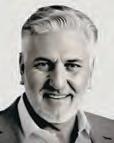


Wolseley Canada Inc. has made three employee promotions:
Courtney Fontaine (1) has been named regional manager for sales and operations in BC Lower Mainland; Naomi Jacquot (2) has been named regional manager for sales and operations in the Interior, Island and Northern regions of BC.; and Gaston Garcia (3) has been named outside sales representative. Fontaine joined Wolseley in October 2023 as regional sales manager for BC.



Jacquot has been with the company since August 2021, most recently as area manager for BC. Garcia joined Wolseley in June 2023 as inside sales manager.
Ontor Limited has hired Georges Ghorra as sales representative and hydronics specialist. As part of his role, Ghorra will help translate customer needs into customized HVAC solutions.



E.H. Price Solutions has hired Jessica Feria (1) as branch manager in Kitchener, ON., and Matthew McAnally (2) as HVAC after sales service technician for the Greater Toronto Area.
Steve Wieland has been promoted to director of national accounts for NTI Boilers, Inc., part of the Fabriano, Italy-based Ariston Group. Wieland has been with NTI Boilers for more than 14 years, and was most recently mid-Atlantic sales manager for the company.

Air Heat Supplies has promoted Jeremy Marsh to regional manager of Eastern Ontario. In his new role Marsh will be responsible for sales and managing operations.
The Canadian Institute of Plumbing & Heating (CIPH) has promoted Kerissa MacDonald to manager, communications. MacDonald joined the organization in December 2022 as program manager.


Daikin Comfort Technologies North America has hired Kevin Fortinski (1) as a territory sales manager for Southern Alberta; Terry Forth (2) has been promoted to division vice president – COD Canada; and Lisa Johnson (3) has been promoted to division operations director – COD Canada. Forth joined Goodman, a Daikin brand, in 2006, and was most recently director, divisional operations for the Central and Texas Divisions. Johnson also joined Daikin in 2006, and was most recently regional operations manager for CCN.
Todd Wiggins has joined Armstrong Fluid Technology as technical sales representative, Southern Alberta.

Markham, ON-based The Morgan Group has hired Barry Moulsdale as senior director of sales.

Shahab Sajadi has joined Oakville, ON-based Danfoss Canada as application engineer.

Steve Buchanan has joined Alginn Metal Industries Ltd. in Calgary as sales associate.


COMING SOON!



INTRODUCING THE VERTA SERIES AIR-TO-WATER HEAT PUMP
Hydronic-based heating and cooling systems that are easier for contractors to install, and easier on the environment to operate.
• Equipped with R32 refrigerant for sustainable, economic operation
• Highly efficient, allowing for high water temperatures even in low ambient conditions
• DHW storage allows users to set a timer as needed for each day of the week
• Switches from heating to cooling automatically
• Users can select the most efficient water temperature according to ambient conditions
• 7” user-friendly touch screen control

Heat pumps can solve a multitude of problems in old apartment buildings. Trim Tab recently completed a heat pump retrofit of a three-storey apartment in Chatham, ON. I’m going to share why it turned out to be such a great project, and I’ll share important considerations for mechanical contractors considering similar projects.
Old apartment buildings are prime candidates for energy retrofits. They tend to suffer from high heat loss, uneven heat distribution (read: stack effect) that leaves top floors sweltering in the summer, and they typically lack central air conditioning. Attention has been drawn to the impact of these conditions on tenants.

A recent survey by ACORN Canada (see pg. 6) reveals that close to half of low- and moderate-income tenants do not have access to air conditioning. ACORN is advocating for future regulations that would introduce maximum heat bylaws to protect tenants during extreme weather. The City of Toronto launched an air conditioning pilot program in June 2025 that provided free portable air conditioners in response to concerns about low-income seniors with health-related needs for air conditioning.


A private non-profit in Chatham operates a three-storey, 25-unit apartment building for low-income tenants. Each suite has a single bedroom and a balcony. The building is heated throughout by electric baseboard heaters. The result is very high electrical utility costs, which are paid by the building owner. Each suite has a wall sleeve and cage that allows for tenants to install an air conditioner that provides cooling only to the living room. From a maintenance perspective, the property has had to deal with the effects of improper condensate management, requiring interior floor and wall repair on several occasions. And tenants upstairs experience high temperatures all summer – the third-floor corridor is often over 27°C.
The problem: A sleeve air conditioner that has evidently spilled condensate onto the baseboard heater below. Not good from a safety perspective, let alone the damage it causes to the wall and flooring.
Tom Grochmal is founder and CEO of Trim Tab Energy Retrofits (trimtabretrofits.com), an energy contractor with a mission to renew housing and inspire better living.
The property manager wanted to eliminate the use of baseboard heaters, sleeve air conditioners, and portable air conditioners, while lowering utility and maintenance costs in the process. The solution was to install two-zone split heat pumps, with one indoor head servicing the bedroom, and the other indoor head servicing the living room. Side discharge outdoor units were specified to minimize space on the balconies.
The units were sized to provide adequate capacity for design conditions in Chatham (-18°C). This resulted in a mix of cold climate rated and ENERGY STAR rated heat pumps depending on the floor.



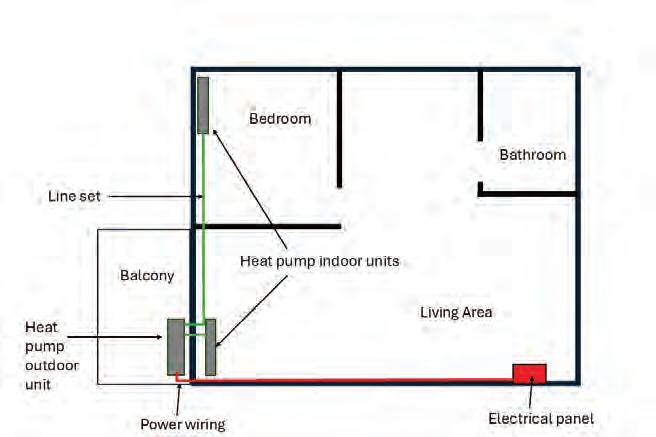
Schematic of solution: A multi-split ductless heat pump that consists of an outdoor unit mounted on the balcony, and indoor units providing heating and cooling for both the bedroom and main living space.
The project was completed during April and May 2025, at a time of the year that would provide minimal disruption to tenants. Now that the summer heat is starting to kick in, the feedback from the tenants and property manager has been great.
1. Tenants love the central air conditioning. In addition to saving them the expense of buying sleeve air conditioners, they sleep better with the quiet comfort provided by the heat pumps.
2. The property manager benefits from the reduced risk of façade, interior wall, and floor damage that used to result from portable air conditioners. Eliminating the cages improves the building’s appearance and will reduce heat loss in the winter.
3. The property manager and board benefit from the fact that the heat pumps will improve the seasonal heating efficiency by two to three times. This will save them thousands of dollars per year in operating costs. It’s meaningful for a private non-profit that runs on a tight budget.
4. The housing board benefits from the significant rebates from Save-onEnergy, Ontario’s agency for electrical conservation. These rebates lowered the capital cost and enabled the project to move forward. Keep in mind, many provinces offer energy efficiency rebates for these sorts of projects.
The process: Carpenters remove the cage and fill in the wall (upper left); electricians run a new circuit (middle); and HVAC technicians install the heat pump (bottom).
Heat pumps are an amazing technology that has come of age for cold climate applications and can adapt to a wide range of existing heating systems. In cases such as apartment buildings, here are some key considerations if you are thinking about introducing heat pumps:
1. Who’s paying the utilities? If the building owner is paying the utilities they have more of an incentive to undertake an energy efficiency project.
2. Is fuel switching involved? Transitioning, for example, from natural gas to electricity can introduce complications. Great heat pump solutions exist to retrofit existing boiler systems that significantly increase heating efficiency and take a big bite out of GHG emissions. However, it’s not obvious that doing so will significantly reduce operating costs.
3. How are you limited by space? Do balconies exist with sufficient space to allow for a split system? Or must you work within the confines of an existing closet? Or simply the space below a window on the outside wall? The answer will have a big impact on your options.
4. How are you limited by electrical system capacity? Does your heat pump solution lead to a load addition on the building? Can existing panels and circuits support it?
5. Equipment sizing: Does the heat pump require a back-up heating source to meet design conditions or work within the constraints of duct work?
6. Will it address maintenance issues? This is often overlooked in the business case. Are there quantifiable benefits from a maintenance perspective? How is this offset by the new maintenance requirements? The property managers are key to answering this question.
7. Will it really address tenant quality-of-life issues? In the end, the heat pumps are there to serve tenants. You need to put yourselves in their shoes and really think through whether the solution will improve their quality of life. Getting feedback during the planning process is essential.


Apartment buildings are potentially great candidates for heat pump retrofits because of the multiple problems that they can solve – lower operating costs, carbon reduction, and better sleep for tenants. Keep in mind there are many considerations to ensure it is done right so owners, property managers, and tenants are happy with the outcome. And for you, as a contractor, projects like this open other avenues for work. It can even cause your clients to shift investment priorities once they experience the benefits.
I look forward to highlighting more great outcomes that can result from properly executed energy efficiency projects in future articles.


Panasonic’s BalancedHome™ Energy Recovery
Ventilators are engineered to deliver advanced ventilation, ensuring balanced airflow and superior indoor air quality in homes across Canada. Whether it’s a new build or retrofit, this system is designed to meet the needs of modern, high-performance homes.



• Top-rated Sensible Recovery Efficiency of 82% at 0 °C for Elite Plus 160 CFM models.
• Optional low voltage timer provides easy, push-button operation to set boost time (10/20/40/60 minutes).
• Built-in SmartFlow® technology provides balanced ventilation regardless of a complicated duct run, saving the contractor time on installation.
• Panasonic’s hygroscopic core balances humidity between the indoor and outdoor airflows.
• Embedded frost prevention strategies automatically activate to prevent the core from freezing.
• Choose the perfect solution for any home. Unmatched flexibility with 8 models and 4 maximum adjustable CFM ranges (130/140/150/160 CFM).
• Available in top-port or side-port ERV configurations to fit any home layout.
• All models are equipped with a standard power cord and include a hardwire adapter in the box.
• MERV 13 filter is standard for Elite Plus models (130/160 CFM). MERV 8 filter is standard for Elite models (120/150 CFM). Washable MERV 6 filters are also available. All filters can be used in all models.


Build healthier homes today. Scan to learn more or connect with a distributor near you.
Residential bathrooms are being transformed into calming spaces that blend personal style with functionality.
Consumers today are prioritizing style and functionality when they renovate their bathrooms, and are looking for versatile elements that help create a comfortable and relaxing space.
“Now more than ever, consumers are leaning into minimalist, spa-like bathrooms that feel like personal sanctuaries,” says Danielle DeBoe Harper, Moen senior creative style manager. “This preference is showing up in fixtures, as homeowners gravitate toward sleek faucets and showerheads that strike the right balance between form and function. Many are opting for solutions that prioritize sustainability while keeping personal luxury in mind; they want fixtures that can meet their needs without style, performance or efficiency sacrifices.”
Consumers want choice when shopping for bathroom fixtures. Product lines that emphasize sustainable materials, responsible sourcing ,and money savings are in high demand, as are versatile fixtures that offer support for wellness and aging in place. When they can, homeowners are enlarging their main bathrooms, and using floating or wall-hung vanities to optimize space.
Customizable spa-like elements are available to suit every budget and space, from programmable lighting and soaking tubs, to ice plunge baths and aromatherapy steam showers. White, brown, green and blue are the top colour choices for walls, while popular faucet and fixture finishes include matte black, brushed gold, bronze and chrome.

The Crista elongated toilet from FGI Industries is crafted from durable vitreous china. It features FLUSH GUARD overflow protection and powerful siphon jet flushing. The 17-in. Plus Height bowl offers added comfort and accessibility. Its extra-large footprint covers floor marks from old toilets, while a 12-in. rough-in ensures easy installation. The fully glazed 2-in. trapway helps prevent clogs.
contracplumbing.com
Homeowners are asking for packaged collections, as well as the ability to mix and match metals and style elements such as faucet handles. “While new mixed finishes like matte black and champagne bronze or chrome are growing in popularity, we still see a lot of consumers looking for
“Now more than ever, consumers are leaning into minimalist, spa-like bathrooms that feel like personal sanctuaries,” says Danielle DeBoe Harper, Moen senior creative style manager. “ “
a cohesive look when embarking on a renovation project,” says Andrea Goertz, senior product manager, fashion plumbing, at St. Thomas, ON-based Masco Canada.
“There’s definitely value in matching collections, especially for those who want a streamlined decision-making process,” agrees DeBoe Harper. “That being said, many homeowners are embracing the opportunity to mix and match. Choosing each element of the bathroom is a way to add personality and create a more curated look, whether it’s blending finishes or textures or even combining contemporary designs with more traditional pieces.”
At the same time, sustainability, environmental responsibility and sourcing remain priorities for consumers. “It’s no longer just about finding the lowest price – buyers in 2025 are far more conscious of what their products are made from, how they’re made, and who’s making them,” says Simon McLinden, national sales and marketing manager at Summerstown, ON-based Longevity Acrylics. “We’re seeing real momentum behind products that reflect responsible sourcing, efficient manufacturing, and ethical business practices. Most larger manufacturers have had to adapt by streamlining operations, reducing waste, and using more sustainable materials to stay aligned with the market.”
Touchless and smart technologies are increasingly appearing in residential bathrooms, in products such as touchless taps and soap dispensers, smart toilets with overflow protection, and app- and voice-controlled showers and bidet seats. New surface treatments that promote cleanliness with convenience are also prominent.
“Since the pandemic, touchless and voice-activated faucets, which allow for touch-free activation to keep the mess out of the faucets, have continued to grow in popularity due to increased focus on hygiene and convenience,” says Goertz.
“Technology continues to play a key role,” agrees John MacNeill, creative services director at Mississauga, ON-based FGI Industries. “Smart toilets, sensor-activated faucets, and app- or voicecontrolled showers are becoming more common.”
Water treatment has become more top of mind with homeowners for health reasons and water savings, and MacNeill says “water quality is gaining attention among homeowners, particularly in areas with hard or mineral-heavy water. While most purification is handled at the whole-home level, consumers are beginning to ask how bathroom fixtures can support long-term water health through better materials and surface technologies.”
“Faucets are increasingly being designed with water-saving innovations incorporated, to help minimize overuse without requiring homeowners to change their habits or decreasing functionality,” adds DeBoe Harper.
By Carolyn Cooper

The Cambium bathroom suite from Moen showcases a combination of machine textures, fluted patterns and a mixed metal finish. Fixtures in this collection feature the M-CORE universal valve system and Duralock Quick System. moen.ca

The Trinsic Touch2O bathroom faucet with touchless technology in champagne bronze can be operated three ways: manually with the handle, a touch anywhere on the spout or handle, or by placing hands near the faucet. The high-tech capacitance sensing capabilities of touchless faucets allows the flow of water to be activated by breaking the capacitance field anywhere around the device. deltafaucet.ca


Simplified Inventory & Mix-and-Match Flexibility
• Only 40 SKUs across three unique lines – Classic®, Classic Plus® and Prestige® Series— allow for optimal inventory management.
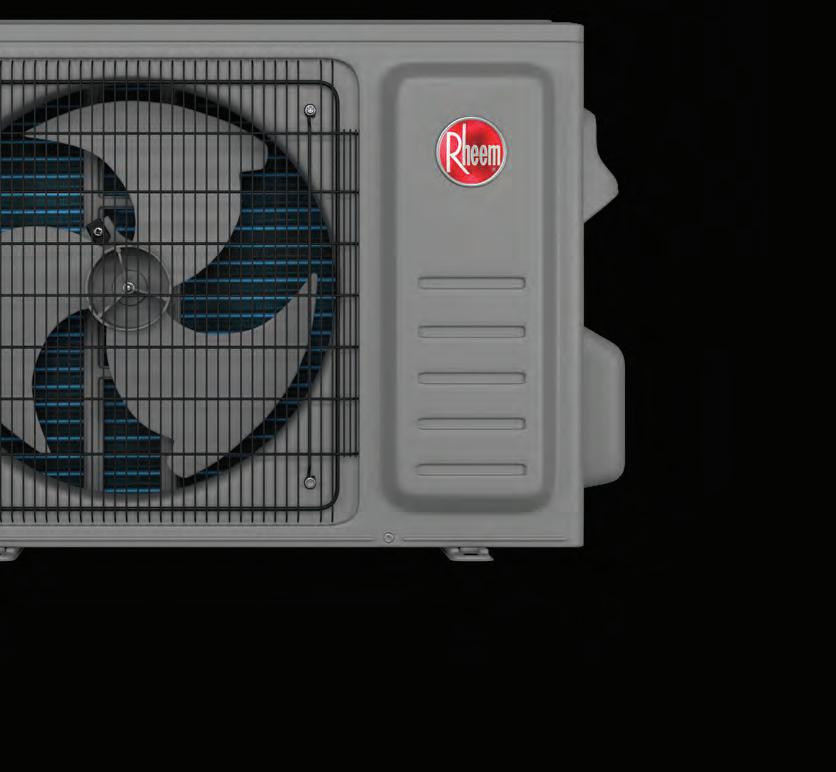
• 4 Indoor Unit Options –Wall-Mounted, Ceiling Cassettes, Concealed Ducted, and Air Handlers.
® Technology on wallmounted units allows for quick access to internal components without full disassembly.
• Heat pump operation as low as -22°F (-30°C) on Prestige® Series Single-Zone models.
MODULAR DRAIN PAN
Easy to remove for cleaning
QUICK ACCESS
Tangential blower and motor for easier repairs
CLEAR PIPING ACCESS
Simplifies maintenance tasks
WIRE TERMINAL BLOCKS
Easy to access for servicing
ONBOARD ERROR CODES
Ensure trouble-free operation
COMPLETE COIL ACCESS
For easy cleaning



2
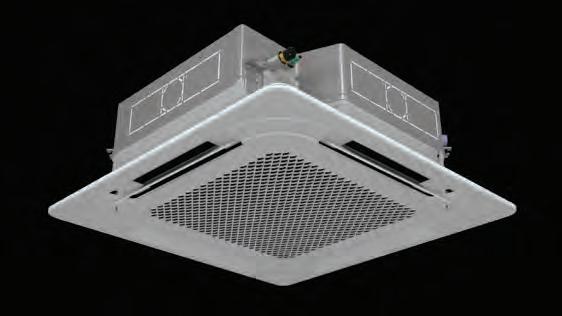



Homeowners are increasingly thinking long-term when they renovate, and are incorporating features that will help them as they age. “We have been seeing an increase in demand for accessible tubs and showers that feature ADA grab bars, shower seats, and low-threshold entries,” says Erica Jones, senior product manager, bathing, at Masco Canada. Jones adds that “within the bathing category specifically, we have been seeing an uptick in demand for smaller bathtub and shower sizes to fit into smaller condos and townhomes.”
McLinden says forward-thinking consumers are also returning to acrylic tubs and showers. “High-quality acrylic stands the test of time – it’s durable, easy to maintain, and cost-effective

without sacrificing visual appeal,” he says. “Today’s acrylic offerings are almost exclusively clean, bright white to give homeowners a modern, minimalist canvas to work with.”
Acrylics are especially good for homeowners planning on staying in their homes as they age. “Special care and aging-in-place products are actually among the fastest-growing segments of our business,” says McLinden. “It’s an incredibly important part of the market, and one that’s only gaining momentum
• Lightweight aluminum legs for weight-critical field use and overlapping tray hinges for strength.
• Reversible jaws give extra life and value.

• Protect plastic pipe with neoprene jaws or reverse for steel jaws.


The modern silhouette of the Studio S Collection sets the tone for an urban-inspired bath collection. The collection includes two handle options for the widespread and unique nested single handle faucet design. americanstandard.ca
as Canada’s population continues to age. People are renovating their bathrooms today with an eye on tomorrow – opting for features like built-in seats, low-threshold entryways or grab bars, even if they’re not immediately needed. While a steel grab bar may not feel necessary now, it’s a thoughtful inclusion for those wanting to age comfortably and safely at home.”

The Horizon 1 1560 tub shower features clean lines, a flat skirted front, and sharp soap shelves. It is available in dome and domeless styles, and two- or three-piece configurations for renovation flexibility. The 1560 offers accessible models, including low-threshold, adult living, and special care options, ensuring inclusive design for every need. longevityacrylics.com


Finding the perfect fit your next commercial project is simpler with LAARS®. Our commercial condensing boilers deliver the high performance you need across a wide range of heating capacities.
• FT Series Commercial Boiler (301 or 399 MBH; 10:1 turndown) our newest commercial boiler converts from wall to floor with optional stand.
• MagnaTherm® (20:1 turndown; 95%+ thermal efficiency) industry-leading fire-tube or water-tube boiler technology including Tru Trac® real-time O2 trim and Laars Linc® intuitive touchscreen control.
• NeoTherm® XTR (399-1500 MBH; 10:1 turndown) our newest boiler and water heater – common vent for up to 8 units.

Discover our full line-up of

Content Media Group Inc. 2 Campbell Dr., Suite 807 Uxbridge, ON L9P 0A3
Tel: 905.465.2919 www.mechanicalbusiness.com
July/August 2025 Issue
Published 2 times per year.
For All Subscription Inquiries
Shila Naik Circulation Director 905-272-4175 shila.naik@mechanicalbusiness.com
Editor: Kerry Turner, C 416-435-1193 kerry.turner@mechanicalbusiness.com
National Sales Manager: Kyle Badder, C 416-735-1375 kyle.badder@mechanicalbusiness.com
Operations Manager: Caroline Bexfield, C 647-217-2076 caroline.bexfield@mechanicalbusiness.com
Contributing Editor: Carolyn Cooper editorial@mechanicalbusiness.com
Art Direction: Fourteen Orange Graphic Design Inc. davem@fourteenorange.com
Controller: Liz Mills liz.mills@mechanicalbusiness.com
Publisher: Bruce Meacock, C 416-457-9563 bruce.meacock@mechanicalbusiness.com
Get
Diagnosing sudden boiler



ROAD WARRIOR: SUCCESS ON THE NORTH SHORE
Variety is a way of life for Ben Duncan of Shadow River Mechanical in Ontario’s Muskoka region, where he undertakes everything from servicing isolated island homes, to installing custom systems in multimillion-dollar cottages.
Carolyn Cooper
SYSTEM PERFORMANCE
UNDER PRESSURE: THE HIDDEN FORCES INSIDE HYDRONIC SYSTEMS
To keep your pumps, boilers, and expansion tanks running smoothly, it helps to understand Boyle’s and Henry’s gas laws.
Todd Wiggins
DESIGN RULES TO LIVE
Explore the world of primary variable piping and maximize boiler efficiency.
Matthew Reid
A
Test
Contractor squeezes sophisticated system into tight-fitting mechanical room.
Thomas Renner
In the hydronic world we move energy around via a fluid, which is mostly inside a pipe or tube. The goal is to move the required amount of fluid around a circuit to accomplish the heating, cooling, or DHW requirement.
Often, we start this process with a load calculation. The load calculation, either heating, cooling or DHW, defines how much energy we need to move through the piping. This basic calculation is important for both new construction projects as well as retrofits. This calculation provides a stable number around which we can design the entire system.
With the load number in hand, we can start the process of sizing pipe, valves and devices, and the heat emitter. In a closed loop system, hydronic or DHW, we also need a method to “move” or circulate the fluid around the circuit.
Many manufacturers create products to do this critical task. This component is called various names. Often it is called a pump; some prefer to call it a circulator. Early on when gravity piping systems were being converted to forced circulation, the device was known as a booster.
First, consider the job this device needs to perform. It needs to move a certain flow of fluid, typically called gallons per minute (GPM). We call this number the design flow rate. Several other pieces of information are needed to select the correct product. The type and temperature of the fluid needs to be identified.
Additionally, we need to know the resistance to flow the piping path presents. We use a term called “head” in the industry, defined as the mechanical energy contained in a fluid. As head is added to the circuit by the pump, circulator, or booster you can observe a change in pressure. Pressure gauges indicate this, like how a thermometer would measure an increase or decrease in temperature.
So, the next step is to select the pump, circulator or booster. Since the term booster has mostly disappeared from the industry, you have the choice of pump or circulator. My suggestion to avoid the naming argument between a pump or a circulator is to call it a circulator pump (CP).
Pump curve charts (just sayin’, that’s what they are called) are what we use to select the correct CP. Locate the flow rate GPM, on one axis, and the head on the other axis.
Manufacturers and their representatives can help you make the best selections of CPs.
By Bob “Hot Rod” Rohr
Bob Rohr is a trainer with Caleffi, and was the recipient of the 2020-2022 CarlsonHolohan Industry Award of Excellence. He has 40+ years of experience as a plumbing, radiant heat and renewable
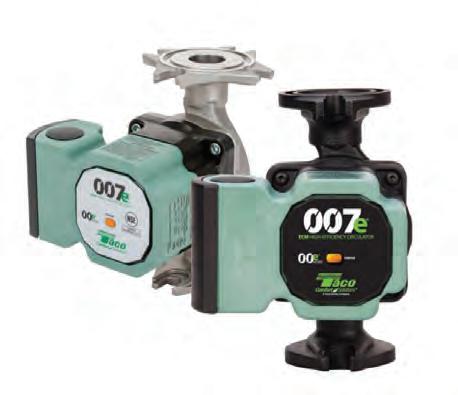

With the ECM’s energy efficient motor design power consumption has dropped by 50 per cent or more in most cases.
Over the years, like most electro-mechanical devices, the circulator pump has seen many changes and improvements. Perhaps one of the biggest changes was the introduction of the wet rotor design. In this type of CP, the motor is contained in the fluid.
Credit goes to Taco for the development of wet rotors around the late 1950s. The wet rotor design is the predominate type for hydronic, solar and DHW applications. Two- and three-piece designs are still common, particularly on the larger sizes. These are based on an air-cooled motor design.
Perhaps the next biggest improvement has been the advance of electronic motors. These are commonly called electronically commutated motors (ECM). This type of CP is sometimes referred to as a “smart pump.” An onboard microprocessor can adjust the operation, record data and provide digital readouts.
Another handy addition is Bluetooth technology. With this option, you can use an app to remotely adjust and monitor the CP operation. I enjoy the ability to “watch” and make fine tuning adjustments from my smart phone to optimize the performance and efficiency. We now have the ability to monitor customers’ systems and be alerted to a fail mode. Summer exercise function is also available right on the CP.

Consider an isolation valve on both sides of the CP. Service and replacement is so much easier when you do not have to do a complete drain down. There are isolation valves available with swivel flanges and purge ports. The purge port can also be used to attach a pressure gauge for testing and balancing information. Protect the CP from contaminants. A Y-strainer may be adequate. However, with ECM type equipment I highly recommend a dirt separator with a magnetic function.

Test pressure gauge added to isolation valve at pump flange.
Avoid flow-restricting valves and devices immediately upstream of the CP.
A check valve should be used on the discharge side of the CP. Most of the current wet rotor designs come with internal checks (IC.) This is a handy feature. I like to see the checks 12 pipe diameters (12D) downstream of the discharge. Keeping the check away from the turbulent conditions at the discharge eliminates the flutter, vibration or rattling of the check valve. I have also witnessed the IC causing an air bubble to be trapped in the CP during an off season shut down. I would also suggest 12D upstream of the CP.
When installing multiple CPs on a system, consider a method of hydraulic separation. Assure the header piping is sized to supply adequate flow, in GPM, when all circulators are running at full capacity.
Use approved, non-ferrous CPs on open and potable water systems.
Of course, refer to the instruction manual regarding proper orientation. Always locate the expansion tank connection on the inlet side of the CP. The expansion tank establishes the point of no pressure change (PONPC) when you “pump away” from the expansion. Learn more about this in Dan Holohan’s book Pumping Away. Every installer, troubleshooter, and designer should read and understand this concept.

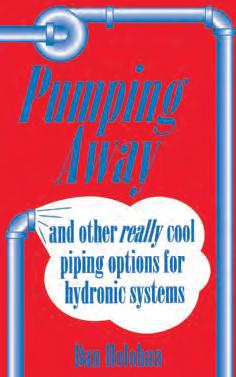
Finally, do yourself a favour and enroll in a CP (or booster or pump) training course, in person or online. So much has changed and improved recently in the circulation world. Make sure you are up to speed (or flow rate!)

Check out this document at caleffi.com for all things circulator pump.
Never install Y-strainers near the inlet of circulators. As they accumulate debris, this type of strainer creates increasingly higher pressure drops.
Get your team together for a day of pure Canadian spirit at The Princess Margaret Road Hockey to Conquer Cancer, fuelled by Longo’s - the world’s largest road hockey fundraiser.
Join over 1,500 players and 150+ teams, alongside NHL and PWHL stars like Wendel Clark, Blayre Turnbull, Jeremy Roenick, Darcy Tucker, Erica Howe, and Renata Fast for a day of hockey, music, and community. Draft Night kicks off on September 26, with game day on September 27.
Every dollar raised supports life-saving cancer research at Princess Margaret Cancer Centre, helping drive early detection and breakthrough treatments for patients across Canada.
Lace up. Step up. Let’s face off against cancer together.
Join or donate today: www.roadhockeytoconquercancer.ca








Cancer demands a united front. That’s why we’re rallying every donor, every player, and every company team to join us at Road Hockey to Conquer Cancer, fuelled by Longo’s.
Every winning team needs a captain, and we’re excited to have Michael Storfer, CEO of Next Plumbing & Hydronics Supply, leading the charge as our Honorary Chair this year. And to the entire Next Supply team, your support has been unmatched, raising over $2.25 million since 2018 for Princess Margaret Cancer Centre. With over 25 teams hitting the pavement last year, this is the kind of teamwork that fuels crucial research, groundbreaking discoveries, and treatment at one of the world’s leading cancer centres, helping us change lives.
Now, it’s your turn to make a difference. Assemble your company team, challenge your rivals, and bring your best. Every dollar raised will support early detection, innovative treatments, and comprehensive support so that we can create a world free from the fear of cancer. Together, we’ll show cancer the power of our spirit and passion. Thank you for helping us Carry The Fire.
Join NEXT in the world’s largest road hockey fundraiser. Email roadhockey@thepmcf.ca




Ben Duncan

Name: Ben Duncan
Company: Shadow River Mechanical
Job Title: Owner
Born in: Parry Sound, ON
Lives in: Seguin, ON
Age: 30
Spouse: Hartley Duncan Son: Theo Duncan
Pet: An Australian Shepherd named Leia
“You have to do a little bit of everything to be successful up here,” says Ben Duncan, owner of Shadow River Mechanical in Rosseau, ON. Being situated in Ontario’s exclusive Muskoka region means Duncan does everything from servicing isolated island homes by boat, to installing customized HVAC systems in multi-million dollar cottages.
Homes in the region also have a wide range of heating and cooling technology. “I have lots of customers with century homes and old-school boilers with cast iron rads,” says Duncan. “Most houses have forced air of some sort, and then quite a few cottages have hydronics as well. And once a week I’m up on Georgian Bay going to different cottages. It’s definitely different out there, because there is no power to a lot of these places, so they rely on propane equipment a lot more than your average person does, and you see a lot of natural draft equipment out there. And then there are some pretty major cottages I’ve worked on that have three or four different systems in them.”
Duncan established Shadow River Mechanical in 2022 after working for many years as a marine mechanic during the summer, and an HVAC technician during the winter. Although he has just one other technician working for him, he’s already looking for more help as his business continues to grow thanks to steady cottage renovations and new builds in the popular tourist region. “It’s been pretty consistent growth,” says Duncan. “To be honest, I was shocked, I didn’t think it would grow as fast as it did.”
Hydronic heating is a popular choice in the area, and Duncan says “most cottages that are over a million and a half usually have hydronics of some sort in them,” from single zones in basements to systems throughout the house. “I finished a project at a new build cottage about a year ago that was pretty cool. It had full zoning through the whole house, about 5,000 sq. ft., and was all hydronically heated. We also did a full furnace and a modulating heat pump, and full duct work through it, humidifiers, HRV, pretty much everything you can possibly do.”

Designing and installing boilers and hydronic systems are Duncan’s favourite parts of the job. “Hydronics is super interesting to me, just from a design perspective,” he says. “I love designing the system, figuring out all the different ways you can do it. It’s a really versatile type of heating system. And then you get to decide on how you want to actually do it. And with heat pump hydronic systems coming around, it opens more avenues for cooling as well.” The challenges come, he says, when he encounters systems that have been improperly installed. “You know, hydronics can seem easy, but there’s a lot of very specific things you’ve got to do to make them work properly. I mean, you can make it work with not a ton of knowledge, but to actually get it to work efficiently and properly is a bit harder.”
In the mechanical industry since: 2013
By Carolyn Cooper
The most useful tool in your toolbox: Multi-bit screwdriver
If you were granted one wish: For my kids to be successful in whatever they want to pursue
Best concert you ever attended: The Arkells

Favourite teacher: Bill Moore
Favourite class: Physics
Best advice you’ve ever received: If you’re going to take the time to do something, take the time to do it right
Advice for young people considering entering the trades: Get all the licences you can while you’re young
The current work ride: 2024 Mercedes Sprinter
Service area: Parry Sound, Muskoka, and parts of Georgian Bay
Any area you like to get dispatched to: Muskoka Lakes or Georgian Bay
Favourite part of the job: Solving problems, whether they be with equipment or with the business
Your favourite tool in your toolbox: Automatic flaring tool
Tool you wish you had: Milwaukee MX threader
Favourite magazine: Mechanical Business
Favourite book: Two-stroke Tuner’s Handbook by Gordon Jennings
Favourite TV show: Two and a Half Men

Favourite movie: Happy Gilmore
Favourite outdoor activity: Dirt biking
Favourite sport: Basketball
Favourite vehicle of all time: 2001 Nissan Skyline GT-R V-Spec II
Favourite video game and preferred gaming system: Halo 3, PC
Favourite season: Fall
Favourite restaurant: Crossroads Restaurant
Favourite food: Pizza
Favourite snack: Oranges
Favourite place to be: Wherever my friends and family are
Hobbies: Cars, dirt bikes, boating (anything with an engine really), computers, working out, and various sports

Last book you read: CSA/ANSI/IGSHPA C448
Favourite website: YouTube
Biggest pet peeves: Having no cell phone reception when I’m trying to work
One place in the world you would like to visit: Italy
By Todd Wiggins
Todd Wiggins is technical sales representativeSouthern Alberta with Armstrong Fluid Technology.
Haveyou ever wondered why a hydronic system will act up for no obvious reason? Chances are that air pressure and dissolved gases are playing tricks behind the scenes. To keep your pumps, boilers, and expansion tanks running smoothly, it helps to understand two age-old gas laws: Boyle’s and Henry’s. They’re not just high school science − they’re key to keeping systems efficient and components protected.
More than 300 years ago, Robert Boyle discovered that pressure and volume have an inverse relationship. When one increases, the other decreases, assuming temperature and the amount of gas stay the same. This simple principle is surprisingly relevant to hydronics.
Think of a pop bottle. Turn it upside down and open the cap. As the liquid drains, the air pocket inside expands to fill the space. As the volume of the air increases, the pressure decreases. That’s Boyle’s Law in action. If the internal pressure drops enough, outside air pressure might cause the bottle to collapse.
I first came across this concept in 2013, thanks to the book Pumping Away by Dan Holohan. He used the pop bottle example to explain how pressure and volume interact. That story stuck with me and is a key part of how I explain pressure changes in closed-loop systems.

Expansion tanks are a great example of Boyle’s Law at work. When water heats up, it expands. That extra volume needs somewhere to go. In a closed-loop system, it pushes into an expansion tank, which has a flexible bladder separating water from a cushion of air.
As the water enters the tank, it compresses the air. When volume decreases, pressure increases. This pressure rise balances the system and helps prevent over-pressurization. It also protects the system from airlocks and poor circulation.
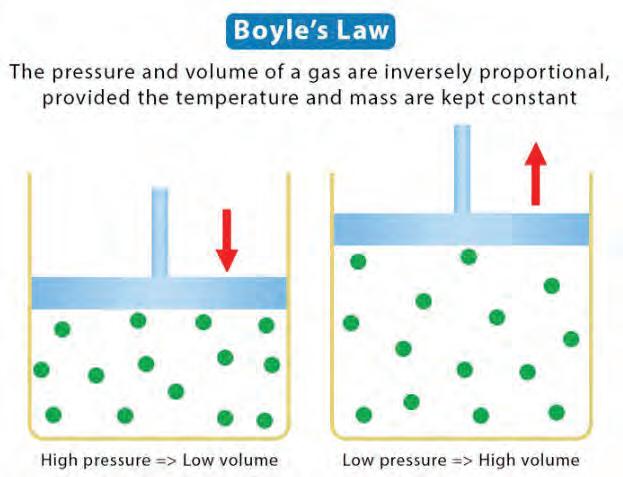
The pressure and volume of a gas are inversely proportional, provided the temperature and mass are kept constant
High pressure => Low volumeLow pressure => High volume
Boyle’s Law relies on three simple conditions:
• Constant temperature – gas molecules move at the same speed
• Fixed amount of gas – nothing added or removed
• Changing volume – pressure shifts as the gas expands or contracts
Since the temperature stays the same, it’s known as an isothermal process, which is important to remember when considering how it impacts real-world systems.
Now let’s look at Henry’s Law. William Henry discovered that the amount of gas dissolved in a liquid is directly related to the gas’s pressure above the liquid, as long as the temperature stays constant. More pressure means more gas dissolves in the fluid.
Open a bottle of soda, and you’ll see this in action. While the bottle is sealed, carbon dioxide stays dissolved in the liquid. Once opened, the pressure above the liquid drops and the gas escapes as bubbles.

Bladder compression during thermal expansion.
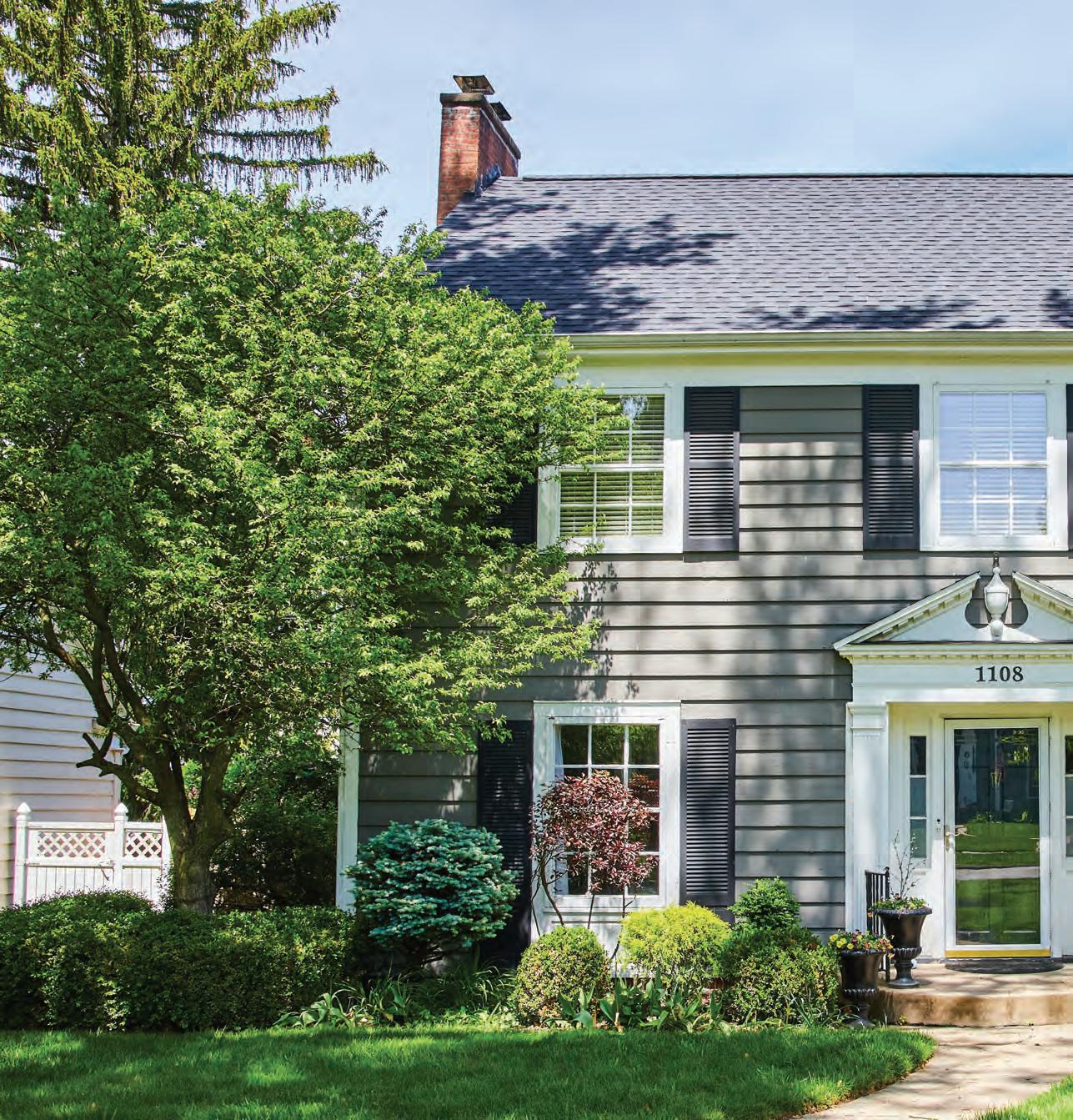
Offering market leading efficiency and a 20 year average life span, the Smart 316 Indirect Fired Water Heater provides a solution for every home.
Exclusive Tank-in-Tank Technology
Stainless Steel 316L Tank
Built-in Aquastat
Lowest Pressure Drop in the Industry
Available in 7 Sizes: 30, 40, 50, 60, 80, 100, 120 Gallons



Air is the number one enemy of closed-loop hydronic systems. It causes corrosion, especially in cast iron components. It also leads to cavitation near pump suctions, where vapour bubbles collapse and damage internal components. Proper air management prevents these issues and improves overall efficiency.

This same process happens inside hydronic systems.
It’s how gases enter and exit the fluid, which is critical to managing system performance.
When air collects at the high points of a system, pressure drops created by the circulator allow water to absorb the air. These microbubbles then move through the system and into an air separator. Inside, the fluid slows down, and a mesh collects the air, which vents out through an air vent.
The pump’s pressure differential and the separator work together. Henry’s Law explains how the gas enters the
fluid, and the separator makes sure it gets removed. The result is quieter operation, better heat transfer, and fewer maintenance calls.

Microbubble separation and release.
CARING FOR WATER. WITH PASSION.

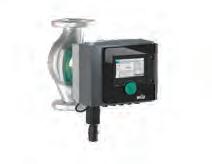

Boyle’s and Henry’s Laws are more than just theory. They explain the invisible forces that affect pressure and air management in hydronic systems. Knowing how they work helps you make better decisions, solve problems faster, and design systems that perform more reliably.


From big to small, we’ve got it all! With optimized and innovative energy-saving features, we deliver the future of pump technology to your doorstep.



The industry-leading, high-efficiency KNIGHT® residential boiler is at the head of the class with 13 models available in either floor-standing or wall-mount configurations. The KNIGHT heating boiler has a multitude of adjustable parameters to suit your unique application making it one of the most flexible residential boilers you can install. Learn more about Knight Residential Gas Boiler at lochinvar.com.

Over the last few decades I have seen my fair share of the good, bad and the ugly when it comes to piping. I have been in beautiful mechanical rooms with shiny new equipment and impeccable attention to detail but the systems were completely inoperable due to bad piping choices.
I have also been in rooms where you feel as if you need a tetanus shot just from looking at the old school pipes; pipes that actually work impeccably because they followed some very simple rules when it comes to near boiler piping. I will share three easy rules to follow when it comes to the boiler pipe. These rules may or may not be controversial, but they always work.

Rule #1: When in doubt, pipe primary secondary. There isn’t a boiler manufacturer I can think of that would be upset with this set up. Primary secondary is very common and it’s also easy to work with.
Primary secondary does a great job of hydraulically separating the boiler loop from the system loop. This strategy can eliminate a lot of common flow issues and it also eliminates the boiler from system troubleshooting issues because it is on its own loop.
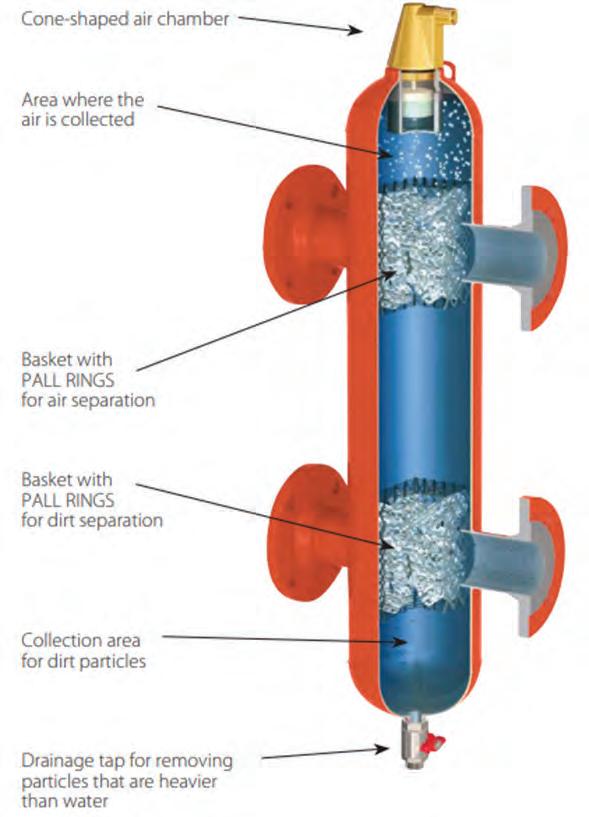
Multiple boilers piped primary variable.
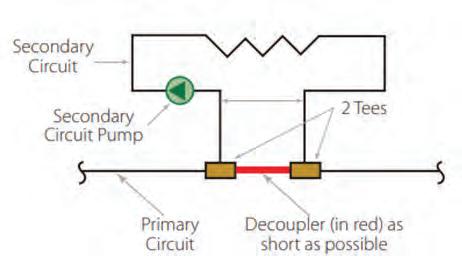
Runs of tees should be as close together as possible.
Primary secondary employs the rule of closely spaced tees. The “rule” is to keep the runs of the tees as close together as possible, ideally within four times the pipe diameter apart, and ensure a minimum of eight pipe diameters of straight pipe run on either side of the tees.
It should be mentioned that the tees do need to be on the same pipe. I was at one project where, although the tees were literally right beside each other, they were on two separate pipes. Yes friends, I have seen it all.
Rule #2: When piping primary secondary use a low loss header (LLH) This may be controversial but those who do utilize LLH know the savings in pipe and labour are what really drives this product to the forefront when it comes to the install.
There are many advantages to using a LLH, such as built-in coalescing media that makes the LLH operate as both a high efficiency air separator and a dirt separator. It’s also becoming common to add magnets directly into the LLH adding another level of protection against magnetite and other malicious ferrous metals in the system.
Also known as hydraulic separators, LLHs are a magnificent piece of trim that take all of the guess work out of the spacing of the tees.
This is not to say that the LLH is without compromise. The drawback you can get with a LLH is something called low delta T syndrome. This occurs when the flow between the boiler side and the system side isn’t equal. This is often a result of having just a standard single speed circulator on the oiler and variable speed circulator on the system.



By Matthew Reid

Image left shows a perfectly balanced system where flow for boiler matches flow in the system. This rarely happens as it only occurs under design conditions.
Image centre will occur when the system flow is higher than boiler flow. This is resulting in a cooler blended temperature going to the system so the boiler has to overfire to compensate to hit desired temperature. The higher boiler temp means higher return temperature that lowers the condensate produced leading to lower efficiency of the boiler.
Image right will occur when the boiler flow is higher than system flow. This occurs in warmer days where the temperature outside is higher than design and results in a warmer return temperature to the boiler, lowering the condensate produced from the boiler and lowering the efficiency.
If the boiler has more flow than the system you aren’t able to give off all of the heat that the boiler has provided. The additional boiler flow goes directly back to the boiler at output temperature along with a smaller amount of system return water leading to a higher return temperature than designed for. The warmer the boiler return the less condensate the boiler will produce; the less condensate the less latent heat we are able to transfer into the boiler and the lower the efficiency.
There are ways to combat this with variable speed circulators on both sides but this can lead to higher costs and create some controls struggles. Still, this is an excellent way to ensure flow for both the boiler and the system. In retrofit projects this is a great way to protect the boiler from low flow situations, which are much worse than higher return temps.
Rule #3: Whenever possible avoid primary secondary. I am aware that I just spent the first two thirds of this article talking you into primary secondary but it is advantageous to explore the world of primary variable (PV) piping. Although this type of system must meet certain criteria and require a degree of engineering input, it is by far the best way to pipe a boiler system to maximize boiler efficiency. PV cannot be
used everywhere and it cannot be used with every boiler type so that’s why the rule is written as “whenever possible.”
PV ensures boiler return temperature is always the lowest it can be so we can condense as much as possible. It is also the lowest cost for boiler piping accessories. In primary secondary there will be multiple pumps both for the boiler side and the system side. Depending on how many boilers there are you may have a very large number of pumps in a system. PV incorporates just one pump (or N+1) that can handle the flow of both the boiler and the system. This means the boiler should have a very low head loss through the HX and should also have very low or no minimum flow requirements. PV also requires you to use isolation valves for multiple boilers to ensure you only get flow through the boiler that is firing.
Design considerations are paramount for PV type systems and you can’t just pipe up and walk away. Engineering is required. The system is similar to how we piped those big mid-efficiency cast iron boilers from years ago. It worked then, albeit not very efficiently, but it absolutely works today because we have the controls and strategies to make this design the most efficient way to pipe.
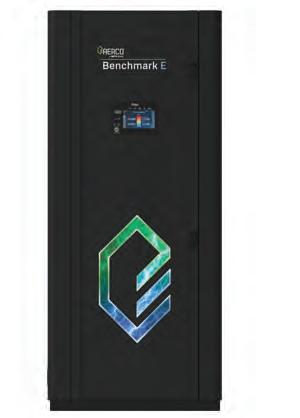
The AERCO Benchmark E is a zero-emissions electric boiler featuring peak load management and hybrid plant capability. It can sequence up to 16 boilers, including hybrid configurations with gas-fired units. Pair it with AERCO’s SmartPlate EV for a fully electric, vent-free heating and hot water plant. Available in five sizes (216-684 kW), Benchmark E supports up to 350 GPM.
www.
aerco.com
The Anesi gas absorption heat pump operates on natural gas, propane, or blends. Using 100 per cent natural R717 refrigerant and combustion heat, it achieves up to 140 per cent AFUE or a 1.43 COP. It delivers steady-state water temperatures up to 62.7°C. It has a 4:1 turndown ratio and ambient reset, and retains 65 per cent capacity at -28.8°C. The heat pump operates down to -41.6°C with a steady 51,000 BTU/hr output.
www.
anesicomfort.com



The IBC Superflow SFB is a high-efficiency condensing boiler offering up to 96 per cent AFUE. It features only four moving parts and an aluminum heat exchanger with copper waterways. Wireless cascade capability allows up to eight units to operate together without communication cables. Compact and contractor-friendly, it includes a touchscreen control panel, ECM pump, and outdoor reset technology. It is designed for residential or light commercial use, the SFB delivers efficient, low-maintenance heating with a strong sustainability profile and ENERGY STAR certification. www. ibcboiler.com
A. O. Smith’s hydraulic separator buffer tanks (ABV) and chilled water buffer tanks (ACV) are engineered for commercial HVAC systems requiring thermal storage and flow separation. The ABV models (120 to 1,000 USG) act as hydraulic separators, isolating boiler flow from system flow to reduce short cycling. The ACV models (120 to 1,000 USG) create volume in chilled water systems. Both feature ASME Sec VIII, U-stamped vessels, flange or NPT connections, and options for 125 to 160 psi working pressure.
www. hotwatercanada.ca

The tekmar Smart Steam Control 289 simplifies steam boiler management with real-time remote access across multiple properties via Nexa by Watts, enabling adjustments from a phone or desktop. It can be retrofitted to any boiler, regardless of age and offers energy savings of up to 20 per cent through outdoor reset, indoor temperature feedback, and warm weather shut down technology. Key features include system alerts, a 5-in. colour touchscreen, and compatibility with all boiler brands.
www. watts.ca

5000 & 6000 MBH
The Avenger® Series II is an advanced two-pass, counter-flow firetube commercial boiler, providing efficient hot water for demanding commercial needs.
» Industry-leading 40:1 turndown
» Thermal efficiencies of up to 96%
» Designed for today’s higher turndown variable primary and low pressure systems
» 3 to 4 week lead-time with stock units available for quick ship


www.camus-hydronics.com/HigherTurndownHydronics

RBI Torus condensing commercial watertube boilers and water heaters have a compact footprint and HeatNet 3.0 touchscreen cascade control. The Tru-Flow fuel/air coupling system has 10:1 turndown and capacities to 4000 MBH. Torus uses a pressure driven mixing system with no moving parts to provide a 10:1 turndown, without lowering the CO2 per cent while avoiding ignition lockouts. The heat exchangers are made from 316 L stainless steel.
www.
rbiwaterheaters.com


The KNIGHT fire tube boiler line is available from Aqua-Tech in six models from 55,000 to 285,000 BTU/hr, with 95 per cent AFUE and up to 10:1 turndown ratio. Models come with ECM variable speed boiler pumps, with features such as Smart System operating control and CON·X·US Remote Connect Capable. The boilers qualify for the POV Program. www.
aquatech-canada.com
info@aquatech-canada.com


The Robur GAHP Plus Range gas absorption heat pumps deliver high-efficiency domestic hot water heating, space heating, and cooling from 48.8°C to -40°C without backup. They produce up to 65°C hot water with ultra-low NOx emissions. With 120,000 BTU/hr capacity and AFUE over 110 per cent, they are 20 per cent hydrogen ready and use R717 natural refrigerant, F-Gas and are PFAS free. Remote monitoring is available. www.
roburcorp.com

The ANS2 Series air pressure switch from Cleveland Controls is a universal, field-adjustable switch for residential and commercial HVAC systems, outdoor radiant heating products, pool and spa heating equipment, and more. Calibration is achieved by turning the key on the adjustment cover with an Allen wrench using the scale to select the set point. The ANS2 is available in three set point ranges: ANS2-1000: 0.08 in. wc to 1.0 in. wc, ANS2-2000: 0.15 in. wc to 2.0 in. wc, and ANS23000: 2.0 in. wc to 10.0 in. wc. www. clevelandcontrols.com

The Cleaver-Brooks Clear Fire-CE (CFC-E) is a high-efficiency, condensing hydronic boiler designed for commercial and industrial applications. With up to 99 per cent efficiency, it features the TurboFer heat exchanger, 10:1 turndown, and advanced controls. It has less than 20 ppm NOx (sub-7 ppm optional) emissions. The CFC-E supports flexible system integration and is scalable from 500 to 6,000 MBH to meet a variety of hydronic heating needs. www. cleaverbrooks.com
The Caleffi AutoFill Automatic fast-filling combo is a kit designed to fast fill a hydronic system to set pressure then automatically shut off the water feed. There are no levers to flip or buttons to push. A builtin shut-off valve and check valve allow isolation of system from supply to stop makeup water if desired. It is precalibrated for hydronic systems. Before charging the system, turn the dial to desired system pressure with a screwdriver (factory preset to 15 psi). The kit includes a FlowShield DuC-AV backflow preventer, which complies with



Eco-friendly and ENERGY STAR certified Conforto high-efficiency condensing gas boilers offer up to 95 per cent AFUE. Designed for wall-mounted or floorstanding installations, they feature gas adaptive technology, integrated advanced intelligence for optimal efficiency, and a compact design for space saving. Combi models provide both space heating and domestic hot water, eliminating the need for a separate water heater, with flow rates of up to five gallons per minute. www.
confortohvac.com
Thanks to our ideal set-up for installers using our unique flow meters on each manifold loop, IVAR stainless-steel manifolds guarantee perfect system balancing, optimizing energy use, while providing premium thermal comfort.
Every manifold set is supplied with all components included in the box, ensuring a smooth commissioning process for radiant system installers.
Pair the IVAR Manifolds with our premium VIPERT™ (PE-RT) Oxygen Barrier Tubing, manufactured specifically for radiant systems, and you have a winning solution every time.
Take advantage of our in-house hydronic expertise, including LoopCAD design and layouts customized for each of your residential and commercial projects.





The Smart 316 indirect water heater from Triangle Tube offers stainless steel inner 316 L tank-in-tank technology – a hot water tank immersed within an outer tank which contains the system water to quickly heat domestic water. The outer tank is covered with highquality insulation, and is protected by a shock-resistant plastic jacket. Features include a built-in aquastat, acid pickling for increased corrosion resistance, and low pressure drop. The units have a heating water capacity of 5 to 43 gallons, and boiler output of 87,000 to 420,000 BTU/hr.
www.
triangletube.com
Salus pump relay controls are available in both wired and wireless configurations, enabling users to control circulator pumps in a variety of hydronic applications. They include essential features like priority for domestic hot water, boiler delay input, and several dry contacts for boiler and accessory control, and can be expanded with controller/worker configuration. The wireless models can also be internet connected for remote control via smartphone, tablet or PC.
www.
braeburnonline.com
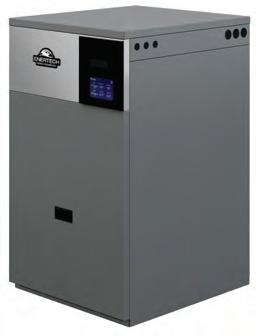


CB Supplies’ VIPERT PE-RT tubing delivers flexibility, hydrostatic strength, and is recyclable and suited to hydronic systems, including radiant heating, cooling, and snow melt. The tubing is compatible with crimp, push-fit, and cold expansion fittings. Available in coils from 100 to 1,200 ft. and diameters from 3/8 to 2 in. Radiant tubing comes in green. Pair with the IVAR radiant manifold, complete in one box with manual shutoff valves and optional actuators for precise control. www.
cbsupplies.ca

Enertech introduces the WV, a variablespeed water to water geothermal heat pump which delivers radiant in-floor heating, forced air heating and cooling, and 100 per cent of residential domestic hot water. The compact unit offers a capacity range of 0.5 to 5 tons, and dual-fuel compatibility with seamless modulating boiler integration, without requiring a buffer tank. Other features include real time data logging, EPIC Connected Controls, 4.3-in. colour screen, and 9 kW electric heating or modulating boiler control www.
enertechusa.com
The Series BD911 from Watts is a high-capacity combination fill valve and backflow preventer designed for boiler feed lines. It automatically supplies makeup water to the boiler while preventing backflow when supply pressure drops below system pressure. Featuring a Model 9D backflow preventer and BD1156F feed water pressure regulator, this pre-assembled unit simplifies installation. Its push-button fast fill function with auto-stop prevents over-pressurization, while a built-in dial indicator eliminates the need for a separate pressure gauge.
www.
watts.ca
The monobloc Solstice R32 Series cold climate air to water heat pump utilizes low GWP R32 refrigerant. The compact and quiet unit is available in three sizes for applications in low load passive homes to largescale commercial with 20 units. Full inverter-driven operation combined with EVI compressor technology produces high-performance heating in outdoor temperatures as low as -30°C and delivers reliable water temperatures as high as 60°C. www. spacepak.com

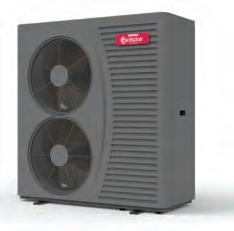
Navien’s Ultra-Low NOx NPF hydrofurnace is available in upflow and horizontal configurations in 60,000, 80,000 and 100,000 BTU/hr sizes that boast 97 per cent AFUE. NPF has a stainless steel heat exchanger to heat water in an isolated compartment out of the airstream. Heated water is circulated through a hydronic coil which transfers heat into the airstream to improve operational control and energy efficiency, and reduce operating sounds. The hydro-furnace also features variable capacity modulating down to 15 per cent.
navieninc.ca

Calefactio expands its 4-In-1 hydraulic separator line with a brass model. The compact unit isolates the primary and secondary circuits while removing air, micro-bubbles, dirt and ferrous debris from fluid. Dirt settles at the bottom for drainage, and air is automatically released through the Calvent float air vent. A built-in magnet captures ferrous debris and helps remove cross-contaminants from the system. Compatible with water and glycol mixtures up to 50 per cent, the separator is available with NPT or PRESS connections of 1 and 1 1/4 in. and is rated for pressures up to 125 PSI and temperatures up to 110°C. www. calefactio.com
THREAD X THREAD
The Precision Dielectric Waterway® fittings are Precision Plumbing Products new offering, it has a thermoplastic liner with pre-formed end shields. Our Precision Dielectric Waterway® fittingsare available in thread x thread sizes 1/2” NPT, 3/4” NPT, 1” NPT and 2” NPT. More options will soon be available.
Assembled at our ISO 9001 and ISO 14001 certified-green factory.
Meets BABAA Build American Buy America Act and American Iron and Steel.
Precision Dielectric Waterway® fittings are designed to meet the requirements of ASTM standard F1545 for continuous use at temperatures of up to +225 oF (+-5 oF) and for pressures up to 300 psi.
Precision Dielectric Waterway® is listed by IAPMO/UPC.
Precision Plumbing/PPP





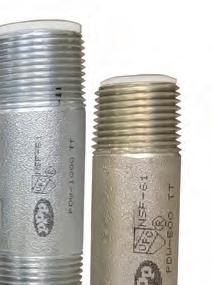
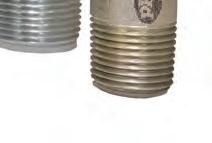


The Spirotrap Magnet eliminates dirt from hydronic systems. Magnets properly located around the flow path ensure removal of ferrous particulate. Non-ferrous particulate can often be removed in less than 100 system circulations. This technology, which can be installed horizontally or vertically, helps provide improved heat transfer efficiency. Available in 3/4-, 1-, 1 1/4-, 1 1/2, and two-in. sizes with NPT, sweat and pressfit.
ontor.com
UPSe is a high-efficiency heating circulator from Grundfos. Built with an ECM motor, it has an energy rating of 193 (based on the Hydraulic Institute Energy Rating). The pump has a range of controls, including constant pressure (zone valve), proportional pressure (TRV), and constant curve (zone pump), each with three settings, making it suitable for many hydronic applications. Features include intelligent dry-run protection, self-venting ability, and unblocking capability.
grundfos.com
HeatLink’s TMP 3-way prefabricated residential threeway mixing panel’s primary application is as a single zone mixing device where there are no flow requirements in the primary loop. Intended to be used with DHW tanks as a heat source, the PLC is programmed with a 24-hour timer for potable applications. When not used with a DHW tank as a heat source, secondary zoning downstream of the panel is possible. Panels can also be used as subpanels to provide additional mixed temperature loops on larger systems. Multiple panels can be used for each unit in a multi-residential complex. www.
heatlink.com


GeoSmart NetZero variable capacity water to water inverter heat pumps use low GWP R454B refrigerant. With a COP of over 5.0 the units reduce the climate-related energy consumption of a building using a variety of renewable energy sources. Ground source, air source or hybrid, these inverter-driven heat pumps are available in power ranges from 1 kW to 22 kW. www.
geosmartnetzero.com
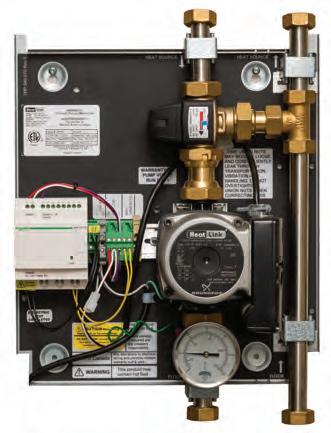
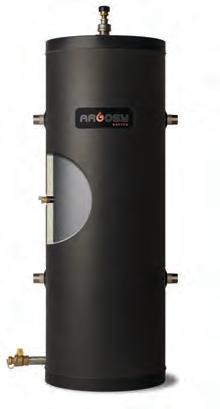
The Flexcon Argosy is a pressurized composite buffer tank that won’t rust. The lightweight unit works for hot or chilled potable and non-potable water, and improves system efficiency by reducing heat pump short cycling during low load periods. It has a reinforced durable continuous strand fibreglass inner tank, threaded stainless steel water connections, stainless steel reinforced thermal well port, injected High-R value closed cell foam to minimize temperature loss, lower drain, and black plastic outer jacket. Models available from 22 to 110 volume gallons. www. flexconind.com

Regardless of installation location, pressure or temperature, the Spirovent Superior removes all dissolved gases from heating and cooling water systems. Once degassed, air problems can no longer occur, at any point, in the system. The Spirovent Superior can be installed at almost any point in a system and optionally replenish system water deficits.

12 Leswyn Road, Toronto, Ontario M6A 1K3
Tel: (416) 781-5286 Fax: (416) 781-7680
E-mail: info@ontor.com Orders: orderdesk@ontor.com
Covering Canada Coast-to-Coast www.ontor.com
By Ray Wohlfarth
You are dispatched to a no heat call on a Friday afternoon and the weather forecast calls for the temperature to drop significantly. The dispatcher said it was a Weil-McLain furnace. That’s not a furnace brand I know, you think. Arriving on site, you see a cast iron sectional boiler in the basement and start feeling the hairs on the back of your neck rise. You’ve never worked on a boiler before and to make matters worse, it’s steam. Relax, we’ve got this.
The owner said the boiler stopped working today. Remember, most sudden boiler faults are due to something electrical. Mechanical failures usually give a warning before failing. For example, the inducer fan or circulator may start squealing or vibrating before failing.
Let’s start by looking at the wiring diagram. I like to use the ladder diagram as its easier for me to troubleshoot. On the ladder diagram, the power is on the left, marked with an H, and the neutral side is on the right, marked with an N.
Remember each circuit requires a minimum of three things: power, a load, and a neutral. Without any one of these, we will have no circuit or heat. The circuit between the power and the load may have switches in the circuit, such as a thermostat or a low water cutoff.
The first thing I do is to identify the loads. The load is anything in the wiring diagram that consumes electricity. This could be a motor, valve, relay coil, circulator, light bulb, damper, transformer, or fan. I’ve identified four loads in this diagram, which means we have four different circuits: 1- transformer, 2low water cutoff, 3- vent damper, and 4- spark ignitor. I didn’t include the gas valve as that is an article by itself.
The next thing I do is determine the starting and end point for the boiler to fire. In this case, the starting point is where the 120 volts feeds the boiler (red star). The ending point is the universal spark ignition control (green star). Now we just have to figure out how to get voltage from the red star to the green star.
Ray Wohlfarth of Fire & Ice Heating & Cooling is an international author, columnist, and consultant specializing in commercial boilers. He has 40 years’ experience in air conditioning, boilers, burners, controls, steam and hydronics. Wohlfarth can be reached at ray@fireiceheat.com.

On the ladder diagram above, the power is on the left, marked with an H, and the neutral side is on the right, marked with an N. Remember each circuit requires a minimum of three things: power, a load, and a neutral. Without any one of these, we will have no circuit or heat. The circuit between the power and the load may have switches in the circuit, such as a thermostat or a low water cutoff.
We know the vertical line on the far right is a neutral wire and any wire touching it is also a neutral wire. If a power wire touched the neutral wire, it would cause a short circuit and blow a fuse or trip a circuit breaker. I highlight or mark the wiring diagram neutral wires. In this case, they are marked blue. Once I mark all the neutrals, the remaining wires are going to be hot or power wires and I highlight them in red. It makes it easier to follow. Yes, I have been known to colour-code wiring diagrams on site using highlighters. The technician after you will thank you.

We now have a choice. You can either start at the 120-volt side (red star) and trace the path to the ignition control or work your way backward from the ignition control (green star).
If I were on this job, I would verify there was 120-volt power to the boiler. If there is no power, check for a tripped breaker, switch turned off, or a blown fuse feeding the boiler. Once I have 120 volts to the boiler, I will check for 24 volts on the ignition control. If there is power to the ignition control, it tells me two things. The first is the switches in the safety circuit are made and the second is the problem is on the fireside of the boiler. It could be the ignition control, igniter, flame sensor, or gas valve.
If there is no power on the ignition control, I know one of the safety controls are open. All the safety controls in the safety control circuit are wired in series. This means that if any control senses something out of the ordinary, it will shut off the boiler. I like to think of the switches in the safety circuit like steps to the gas valve or ignition control.
Let’s start at the red arrow and work our way down. We know there are 120 volts, so we move to the transformer outlet. (Load 1). We should have 24 volts there. If not, the transformer may be defective or tripped. When you see a circle with a letter or number inside, this usually ndicates terminal connection. You can test for 24 volts at the R terminal.
In the safety control wiring, we see this boiler has multiple switches; 24 volts leaves the transformer and flows to the first switch, the low water cutoff. If the boiler water is above the setpoint, the power should pass through the low water cutoff. If you have 24 volts on the G terminal, it means the low water cutoff is satisfied. The voltage then
goes to the second switch, the thermostat, BCP, or operating control. The BCP is a boiler control panel. This is the call for heat for the system. You can verify the boiler has a call for heat by testing terminal Y. If we have 24 volts on terminal Y, there is a call for heat.
The power leaves terminal Y and goes through any additional limits. If there are no additional limit controls, this may be jumped. Once that circuit is made, the power goes to the spill switch. The spill switch would be under the draft diverter and will shut off the boiler if it senses heat, meaning the boiler is having rollout or spillage.
If the temperature is below the spill switch temperature setpoint, the 24 volts flows to the limit control. The limit control on a steam boiler is a pressure control. A hydronic boiler will cycle on temperature. If the pressure on the boiler is less than the pressure control setpoint, 24 volts goes to the rollout TFE or thermal fuse element. The rollout TFE will melt the sensor and interrupt 24 volts if the temperature is excessive. It is usually mounted above where the gas enters the boiler. This is usually a one and done control and has to be replaced if it melts.
The last safety control is the end switch inside the flue damper. On a call for heat, the flue damper drives the damper open. Once open, the damper makes an end switch and allows voltage to pass. It will then travel to the spark ignition control (green star).
I hope this helps you effectively use a wiring diagram to troubleshoot a boiler on a Friday afternoon.

By Thomas Renner
things often come in small packages. A complex installation by Stott HVAC Systems at a custom-built Toronto, ON home delivers outsized performance from a compressed mechanical room.
Working within a 36-sq. ft., space, Tyler Stott’s team installed heating and hot water components for a two-storey, 12-car garage that covers 2,500 sq. ft. and an 800- sq. ft. cabana room. The heating elements also deliver nearly 1,000 sq. ft. of heat for a snow and ice melt (SIM) system. The garage and cabana room − an enclosed space adjacent to a pool − were additions to a 20-year-old, 10,000-sq. ft. home.
“It was more like a closet than a mechanical room,” Stott said. “We had to use every square inch and had to share the room with the electrician and the plumber. We were all fighting for our space.”
In the mechanical room for the cabana and garage, Stott selected a high efficiency condensing gas boiler. He also replaced four boilers in the home with the same model boiler. The cabana room mechanicals include a wall-mounted indirect water heater. Stott mentioned that installing and squeezing the equipment into the tightfitting mechanical room was one of the most challenging aspects of the project.
Mechanical rooms are sometimes referred to as the “brains of the house.” They include critical components for comfortable living, such as HVAC equipment, plumbing systems, electrical panels and wiring and security control panels. A well-designed “brain” provides easy access for maintenance and repairs, ensuring the long-term functionality of critical systems. Whenever an issue arises, your first stop to diagnose the problem will likely be the mechanical room.

Stott HVAC Systems installed elements for heating and hot water for a two-storey, 12-car garage and a cabana room in a 36-sq. ft. mechanical room. The system also directs a snow melt system.
Thomas Renner writes on building, construction and other trade industry topics.

The mechanical room includes a boiler, indirect tank for domestic hot water and thermostats. Equipment for electrical and other mechanical services is also included in the tight-fitting space.
Sometimes, however, builders, architects or even homeowners pinch the mechanical room footprint in order to increase square footage in other areas of the home where they can add living functionality.
“A lot of times we get jammed up in closets where it’s not going to look the most pretty,’’ Stott said. “In this case, there wasn’t a ton of space to begin with. My suggestion was to create a mechanical room in the garage, but the client didn’t want to give up any of that space. He is a car collector, so that was not going to be an option. Instead, he agreed to sacrifice some cabana room space. We were trying to accomplish a lot in a limited space.” Stott explained that the mechanical room was six feet by six feet. “It would have been optimal to have double that size,” Stott said.
The heating components alone are quite extensive. A boiler delivers in-floor heating for the cabana and to a SIM system around the garage and cabana room. The mechanical room also includes an indirect tank for domestic hot water.
“I wanted to have all the same boilers throughout the house,’’ Stott said. “I also put together parts packages, so I have every single replacement part for the boilers on site. If there’s ever a failure, our team will show up and all the parts are already there. There won’t be any downtime for the client.”
“We also installed thermostats in the mechanical room, and each zone is run off of slab and sensors,’’ Stott states. “People won’t even realize that they are there. We removed that wall acne from the interior space, and it’s all controlled from the mechanical room and is Wi-Fi compatible.”
Despite the space crunch, Stott said the subcontractors who installed components in the mechanical room worked together to accommodate all parties.
“The installation was staggered,’’ Stott explained. “There’s barely enough space in that room for one person. We coordinated the space and got on the same page about what was going where. We worked with the builder to make it happen, and the client was very accommodating.”

“A lot of times we get jammed up in closets where it’s not going to look the most pretty,’’ Stott said. “In this case, there wasn’t a ton of space to begin with.”
Stott, lead team member Jay Singh and the crew also replaced four other boilers in the home with 324 MBH units. The boilers have onboard Wi-Fi and a touchscreen that is easy and intuitive, but also powerful. The boilers deliver 95.4 per cent thermal efficiency.
“I wanted to have all the same boilers throughout the house,’’ Stott said. “I also put together parts packages, so I have every single replacement part for the boilers on site. If there’s ever a failure, our team will show up and all the parts are already there. There won’t be any downtime for the client.”
The mechanical room indirect unit features CFC-free 2 in. ultra-high density EPS insulation to ensure low standby losses and each unit came complete with a thermostatic mixing valve, tank sensor and T&P valve. Recovery rates exceed most industry standards. The space-saving design was also an important consideration for the small space.

The elaborate project is one of the highlights of Stott’s extensive career experience. Opportunities are rare to install equipment for mansions of such opulence.
“It’s definitely on our Top 10 list,’’ Stott said. “I’ve never worked on a project that included a two-floor garage. It was an amazing opportunity to be part of it, and we got to take care of one of our best clients.”

Match the terminology you hear in the field to the correct definition or function by September 9, 2025 and enter for your chance to win a Yeti cooler from NIBCO. This contest is open to Mechanical Business subscribers in Canada. Send your answers to kerry.turner@mechanicalbusiness. com or enter online at mechanicalbusiness.com.
4) Air-cooled chiller B) Fans pull ambient air through the condensing coil to eliminate heat
Answer 4,B
Thank you for participating!
A) Transfers air to small (2 in. ID) round outlets in each room through flexible tubing that weaves in between spaces in the walls, ceilings or floors
B) Fans pull ambient air through the condensing coil to eliminate heat
C) Describes the use of water as a heat-transfer medium in heating systems, and a cooling-transfer medium in cooling systems
D) Indicate a system’s capacity to store energy
E) Relies on a single phase alternating current (AC) in the stator winding to create a rotating magnetic field
F) Comprised of a HP and thermal storage tanks (ideally one for DHW and another one for space heating and cooling)
G) A small device installed in a closed system of fluid in residential and light commercial applications
H) Sets out the minimum provisions for the installation, extension, alteration, and renewal of hydronic heating systems
I) Heating loads, other than those for space heating and domestic hot-water heating
J) Designed to reduce incoming water or steam pressure to a safer constant predetermined downstream level
K) Condensing system is connected to a cooling tower for heat rejection









Flood-Guard from General Pipe Cleaners prevents basement flooding by acting like a check valve to seal off water back-up caused by overloaded sewers. Flood-Guard installs in minutes, and includes moulded rubber gaskets and plated or stainless steel metal parts. Float models are available in 2-, 3-, and 4-in. sizes, while Flood-Guard standpipe models for extended pressure applications are available in 3- and 4-in. sizes. www.
drainbrain.com


Eco-King introduces the HEET 199 tankless water heater. Its single pass stainless steel heat exchanger, included internal pump, water hammer arrestor and isolation valves allow for a simple to install and service unit. With 97.5 per cent efficiency and 10:1 turndown ratio, the exchanger has wide passageways for durability, corrosion resistance and superior water heating. Models are natural gas fired and field convertible to propane. ww.
kingheatingproducts.com
The PE pipe peeler from Reed prepares the outside diameter of polyethylene pipe for electrofusion by removing the oxidized layer and contaminates. Featuring a four-sided, carbide blade to provide a cutting edge on each side, the tool peels a range of pipe sizes, on the edge or anywhere on the pipe with enough clearance. Its spring-loaded design adjusts for high and low spots, while keeping constant pressure on the pipe for a smooth finished surface and uniform peel. ww.
reedmfgco.com
The Press System copper 45-degree fitting elbow from NIBCO has a male fitting end and a press connection to allow pipeline direction to be changed by 45 degrees between a press connection and a fitting connection. It is designed with an inboard bead and EPDM O-ring so that applying pressure from a pressing tool tightens the O-ring onto the tube, creating a watertight seal. The lead-free fitting is made of dezincification-resistant ASTM B75 Alloy C12200 copper, and has an operating pressure of 200 psi cwp, with select configurations to 300 psi cwp, and a temperature range of -28.9°C to 121°C. www. nibco.com



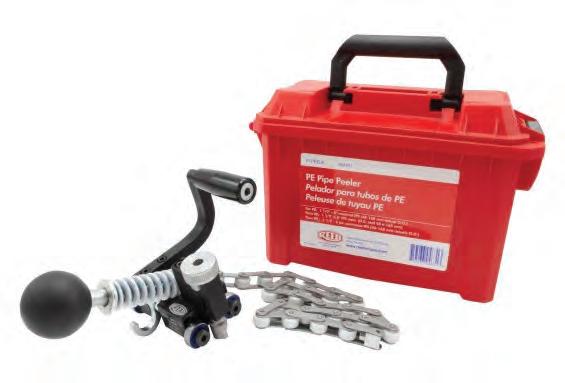
The Vitocell 100-V (CVWC) domestic hot water (DHW) tank from Viessmann is designed for a range of residential applications. Constructed from premium steel and protected by Ceraprotect enamel coating, it also features an advanced electronic anode system for long-term, maintenance-free corrosion protection, even in hard water conditions. Integrated carrying handles make transport and installation easier and more efficient. Available in 53, 66, and 79 USG capacities, the DHW tank integrates seamlessly with Vitodens boilers. www. viessmann.ca
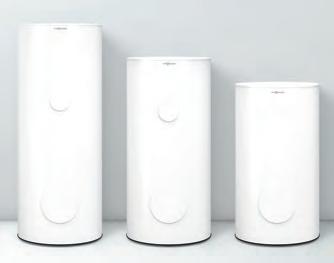

By Fred Bretzke
Fred Bretzke is a full-time pipe trades instructor with Calgary’s SAIT Polytechnic and the recipient of the 2024 Cadmus Teaching Chair. Fred also received the 2020-2021 Innovation of The Year Award: SAIT for digitizing the project-based learning approach apprenticeship training is known for. Fred’s new code book appendix, entitled It’s In The Code, has now been copyrighted and published with SAIT. He can be reached at fred.bretzke@sait.ca.
Despite the availability of many hands-free, high-tech fixtures, my focus is on traditional fixtures suitable for restoring a century-old house. About 30 years ago, while managing A&B Plumbing in Calgary, we worked on a restoration project called the Parrot Lady project.
The name was inspired by an elderly woman in her late eighties who lived alone in a heritage home in Mount Royal built around 1910 for a city judge. Her steam heating failed during a typical -34°C week in February 1990. She loved her old home and refused to leave during the restoration. We provided temporary heat and water to the top floor of this heritage home.
This was my first time seeing this on an insurance job. The client, a dramatic woman with a talking parrot, made each day interesting. Every morning, she greeted us from the stairs with her parrot, often forgetting to dress, which was quite unsettling for us.
All the cast iron radiators were split and needed replacement. It took six weeks to order replicas from Texas. Repairing them required careful cutting of steel piping to avoid damaging threads, so most of the radiators had to be replaced. I learned more than old-style plumbing and heating while working in the house. Across history, the wealthy have always had the latest technology and lived comfortably. Each of the dining room chairs had a foot buzzer to summon servants for more food.
This old house had a lot of history and required numerous repairs and replacements. Each mechanical task we addressed presented its own set of challenges.



The old cast iron bathtubs leaked after water damage and frost. The house had at least four bathrooms. We agreed on replacing the old rollrim cast iron bathtubs with new replicas because they are comfortable, deep, and retain heat better than steel enamel tubs.
Removing a cast iron bathtub is challenging and generally requires three to four strong individuals. It is advisable to let professionals with the proper lifting equipment handle the job instead of relying on four people. However, a more effective method is to carefully break the tub into pieces using a sledgehammer and carry each piece out. This approach is less hazardous to one’s back and ensures safer handling. Installing these tubs can be an exercise in patience. Typically, a freestanding old-style set of chrome 8 in. faucets has to be installed in a straight and orderly fashion as they are exposed and have to be straight. The waste and overflow are also exposed and have to look good. The 1.4 FU on the tub stands for the water flow fixture unit load for sizing purposes and 1.5 FU stands for the drain load. In the pictures provided the plumber is attempting to assemble the tub waste




and overflow. The overflow should look a little different. The talking parrot was cute initially, but it became a bit of a pain in the butt, because it would repeat what you would say. The owner would leave it in a cage in the kitchen, hence it would listen and start repeating whatever you said when the lady came into the kitchen. This proved to be embarrassing as I have never heard a bird swear so much. Last but not least were the pedestal basin and pull chain toilet. I have yet to hear a plumber say they loved installing pedestal basins; you have to purchase an expensive one for it to fit together nicely. Otherwise, you could spend a bit of time getting it level and tightly fitting.


The history of pull-chain toilets dates back to the early 1800s when royalty and religious leaders had more advanced plumbing systems compared to others. For example, the English Queen used a stone bench with a hole that directed waste into a moat surrounding the castle, which led to an unpleasant odour. Sir John Harrington invented the pull-chain toilet for the queen and was knighted for this invention.
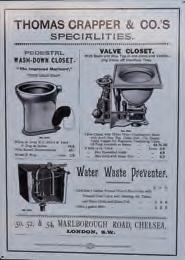
However, it did not completely solve the problem of odour. In 1898, Thomas Crapper developed the modern water closet with an integral S-trap that contained the smell using a water seal, significantly improving sanitation.
Hence in the First World War, while the British and French languished in the trenches, Thomas Crapper came up with an advertisement on the sides of box car trains displaying his WC. That is said to be the origin of the saying “I need to take a crap.” However, that’s not the whole story. It was actually his apprentice Albert Giblin who created the new toilet and Crapper stole it and patented it for his own profit.
Sanitation and aesthetic considerations would make you want to have one of those pull chain toilets in a separate closet, hence the phrase water closet was born.


By Kerry Turner
Aprolific songwriter from the time he teamed up with Greg Keelor in the 1970s, Jim Cuddy has since released 16 Blue Rodeo albums, and six solo albums, the most recent being All The World Fades Away. Juggling two careers created challenges and advantages for the band and Cuddy. “Way back when we started doing solo records, I think it was a way of relieving pressure within the band, because when you’re in a band with five people and you’re ascending, there’s so many demands on your time and you spend so much time together. So, I think that becomes a little bit of a pot boiler,” notes Cuddy.
“Greg went off and did a solo record, I did a solo record, and from then on, we’ve allowed time for doing solo tours, solo records, solo launches, and it seems to work out. We did that after the band had been together for about 13 years, understanding that maybe Blue Rodeo would be a first call for nine months and then you’d have three months to do something else − that’s the way we’ve played it. I just try to work out the schedule whereby when Blue Rodeo is resting, I go out and do some stuff.”
Cuddy has a pretty busy performance schedule during that resting time. “I think it’s somewhat unusual to do it as full time as I do it, but I don’t think it is unusual for members of a long-term band to have outside projects. For each individual to get everything they want out of music from one collective is very difficult, so I think it relieves in terms of creativity and then it’s just a question of timing. You hope that a band, a collective can do all it needs to do each year in about nine months. I think that’s about right with time off in between and beyond that it gets to be too exhausting.”

“We’ve always been able to have new music and record new songs and

Changes in the music business have placed more pressure on musicians to be doing more live performances to remain relevant and in the public eye. “There are huge challenges now because of the lack of record sales. I mean, streaming and I guess iTunes sales are just not enough to sustain bands. There’s a more desperate need to play live and to have a cover charge now. People charge more for concerts, so that’s helpful. I think the two things that are the most difficult is the lack of record sales and the lack of university playing. When we started, all the universities across the country had full-time bookers. They would book Canadian bands for their orientation week, for their winter carnivals, for their fall concerts. All those young people got to see this swath of Canadian bands and become fans, or not, whatever, but they got to see them. Now with just DJs, it’s not the same,” says Cuddy.

As a solo artist and as co-founder of Blue Rodeo, Jim Cuddy has received 15 JUNO Awards, and The Order of Canada. Along with his bandmates in Blue Rodeo, he has been inducted into the Canadian Music Hall of Fame, received the Governor General Performing Arts Award, a Star on Canada’s Walk of Fame, and together with friend and creative partner Greg Keelor, was inducted into the Canadian Songwriters Hall of Fame in 2024.
While he believes social media is an advantage for musicians, he doesn’t think it overcomes the disadvantages of not playing at universities and not having record sales. “Not having record sales means you can be a pretty popular band, you can go on a tour, but when you come back, you have the money that you made on tour, you don’t have anything in reserve like you would have with record sales, and that money provides you with time to recuperate, to write new music, to record new music. There’s always this push for young bands to continually play, and it’s more difficult for advancement.”
As an established band Blue Rodeo has weathered downturns and changes to its own structure but there has been a constant. “There have been lots of ups and downs and some of it had to do with just the general fatigue of playing so much and being together so much. And some of them have to do with just aging. I think what we’ve not had, and which has been good for us, we’ve never had a real creative pause. We’ve always been able to have new music and record new songs and go out with a new record. And that, I think, is a tribute to the hard work in the band,” says Cuddy.
When it’s time for a break from his hard work Cuddy enjoys playing hockey and cycling but with caveats. “I still do play hockey. I’m definitely coming to the point − I play on a team, and that’s a team in a league with mostly middleaged guys, not guys my age. That’s getting more difficult. This may be my last year of that. I also play a pick-up game with my son and all his friends. I’ll continue doing that
because it’s fun, but it takes me a day to recover,” chuckles Cuddy.
“As a singer and guitar player, I can handle almost any injury. Anything from sort of like the shoulders down is fine with me. My wife and I do a lot of cycling but it’s the reason I don’t do mountain biking. Most mountain biking injuries are wrists, shoulders, head, and that’s all the stuff I need. I need my voice and I need my guitar playing. But hockey injuries are usually legs or back, I’ve had plenty of stuff and still been able to carry on.”
Cuddy did a lot of work in the U.S. with Blue Rodeo but notes that the band wasn’t “taken to the same way we were in Canada. I think there were things about us that were more uniquely suited for Canadian audiences. There are a lot of places where it’s more necessary to identify the style of music you play and I think that’s primarily the United States. When we play in Spain or in England, the kind of music we play, roots music, has different elements and people like it. In the United States there was just confusion: What kind of band are you? Are you a country band? Are you a rock band?”
Just as their music is a mix, so are the locales where they perform. The Jim Cuddy Band and Blue Rodeo tour schedules offer up a glimpse of Canadiana with every sort of venue, situated in hamlets, towns and cities coast-to-coast. For Cuddy there is an appeal and it lies in connecting with fans and maintaining their skill and ability as a band. “You can’t play 12 times a year and think you’re going to be a crack band. For us it’s been about finding the right balance between playing and not playing,” says Cuddy.
“It’s always interesting and entertaining and good for the band to go places that are off the beaten track. Sometimes it’s fun. Last summer we went to Gunner’s Cove at the north end of Newfoundland. It’s by far the smallest community we’ve ever played because I think there’s only 60 people in Gunner’s Cove. It draws from that whole peninsula.”
This fall though, it is larger cities and venues on the schedule as Blue Rodeo sets out on its tour to commemorate 40 years of creating original music − something Cuddy plans to keep doing for a long time. “I think Greg and I are kind of chomping at the bit with new songs. We have our 40th Anniversary Tour in the fall, lots of enjoyable summer stuff and some time off, which is nice but we’ll probably make a record − we’ll probably start sooner rather than later.





For over 170 years, Flocor has been the name professionals trust for quality, reliability, and innovation in mechanical piping. Proudly Canadian-owned and operated, we continue to deliver a full spectrum of solutions tailored to your needs.
Flocor – Your Complete PVF Solution. Experience excellence. Experience Flocor.






With a simple phone call, you are connected to an integrated enterprise, from ordering to distribution of a comprehensive assortment of products including pipes, valves, fittings and suspensions. From our warehouse to your network, Flocor is your complete one-stop distribution network.
right where you need us.
With seventeen strategically located stocking centres across Canada, including five regional distribution centres, Flocor provides you with quick access to one of the broadest product lines in the industry. Our sophisticated ordering system puts this inventory at your doorstep.
Always in stock, Flocor has thousands of combinations and styles of valves, pipes, fittings and brackets, as well as a superior range of sprinklers and related equipment, including piping, valves and fittings for water supply systems.
With this comprehensive product lineup, Flocor can continuously meet the needs of the industrial, commercial, fire protection and municipal markets. This extensive inventory is readily available to you… right now.
right when you need us.
No one knows the PVF market or products better than Flocor. Our team of over 100 specialists, present across Canada, is ready to provide expertise and assistance to help you make the right choice.
Always there... right when you need us.

Committed to your success! www.flocor.com
Mould should be top of mind for any commercial property owner, business manager, and specifically operators within the HVAC sector. If a mould problem develops, it poses a serious risk to the longevity, structural integrity, and overall envelope integrity of any commercial building, and it also poses a major health risk for its occupants.
Flooding and water damage is a common occurrence in buildings of all sorts and can create significant disruption to the activities occurring within commercial spaces. When left unattended, moisture and water damage can lead to different types of challenges, and higher costs related to mould remediation.
First Onsite’s annual Weather and Property Survey found that mould concerns are high across the country, with six to 10 Canadians (61 per cent) concerned about the risk of mould and its negative health effects. That concern is justified. Once there is mould in a building and it’s an identified threat to occupants, it can result in liability exposure if there are health implications. It’s often the risk associated with mould and the potential for lawsuits that drives urgency around the need to clean it up.

Mechanical contractors also have a role in helping to ensure the workplace and physical environment is safe and won’t make people sick. One of the key factors in preventing mould is to properly regulate the relative and specific humidity of a building to ensure it is within an acceptable range.


It is critical to do routine maintenance and regular inspections of HVAC systems.
Mould needs high humidity, a lack of airflow, and a lack of direct light to spread. If a building is exhibiting elevated humidity because the HVAC system is antiquated or the building has an occupancy level higher than the HVAC system was designed for, it can result in an increased risk of microbial growth.
HVAC systems are the lungs of buildings. When contaminants are introduced into a building’s system, the spores can spread through the HVAC system from one office or apartment into other areas of the building that are sometimes very distant from the source of the problem. It’s important to look for signs of microbial growth or additional debris. Physical contaminations of the system can be telltale signs of a much bigger problem within a building.
Building managers and mechanical contractors should also ensure the HVAC system is operating with the best available filtration system and that the filters are adequately maintained and cleaned as per the manufacturer’s instructions.
Systems in facilities such as warehouses and industrial buildings where materials are stored sometimes don’t receive the same amount of attention because it is perceived employees are not present on a regular basis. However, people are still working there – in and out – and the air is probably mixing with the air in the rest of the building. An equal amount of respect should be applied to these facilities.
It is also critical to mitigate water damage quickly to prevent the threat of mould. When building materials get wet, the drying process must be handled immediately, and with the correct equipment and oversight to handle the moisture problem speedily.
Frequently, buildings have very small leaks around windows, doors, or roofs. Small water leaks, if fixed immediately, might cost a couple hundred dollars to address. However, over time, especially over months or years, moisture buildup within the building materials could result in a mould problem that ends up costing hundreds of thousands or even millions of dollars to remediate.
By Jim Mandeville
Weather and geography can also affect buildings and the potential for mould growth. Areas that have warmer and wetter climates are very prone to quick microbial and mould growth – those are the conditions in which mould loves to grow.
This is specifically true in British Columbia and the lower mainland region. These places are very humid and warm most of the year. Ontario, Quebec and Nova Scotia also have relatively high precipitation and moisture levels.

is important to be on the lookout for water stains and black, green, or dark coloured spots.

Mould is rarely visible when it’s a small problem. In many cases by the time signs of mould are discovered, it’s potentially a very large problem in that building. Nevertheless, it is important to be on the lookout for things such as water stains and black, green, or dark coloured spots on the walls or ceiling tiles. These things can be key indicators of a mould problem that’s just beginning to rear its head.
It is helpful to use all five senses, especially when it comes to water and mould damage. Be on the lookout for problems and things that look or smell different. In significant cases, occupants may even find there are respiratory challenges and physical reactions to the environment.
Juxtapose that with locations such as Yellowknife or Edmonton, which are dry places. The climate is very arid, the temperatures are very extreme, and mould has a more difficult time growing in those environments.
When considering new technologies, any degree of increased automation to systems in the building (plumbing, mechanical, electrical, fire suppression, and so on) can build in better control. Real time monitoring, controls over valves and water flow, and quicker reaction times through better information can protect buildings and make them safer.
Finally, a big part of energy retrofits deals with the building envelope – the skin of the building that keeps the outside environment outside and keeps the inside environment perfect for the humans inside. A lot of that often involves installing additional insulation, exterior coverings such as siding, and windows that are more energy efficient.
Mould can have a detrimental effect on the physical condition of a building and has serious effects on people’s health and must be taken seriously. With regular maintenance of mechanical systems, early detection and action, and quick water damage mitigation, the threat of mould can be prevented. As technology continues to evolve at a rapid pace, installing new technology and upgrading the building’s systems will help building managers and commercial property owners keep their properties and people safe.
The Ontario Geothermal Association’s (OGA) 2025 Conference was held May 21–22 at York University. With over 250 attendees across two session-packed days, the event reflected a market actively shaping the future of building electrification and decarbonization.
The Day 1 keynote featured Ralph Torrie and Glen Murray. Torrie highlighted the need to redirect energy spending from fossil fuels to electrified heating, with heat pumps positioned as the workhorse of that shift. Murray followed with a look at a Passive House, NetZero hotel development he’s working on — a sharp example of how business innovation is driving the adoption of high-performance technologies, often faster than policy.
Other Day 1 presentation topics centred on commercial, institutional, and multi-residential applications. Topics ranged from design and installation to policies and financial modelling. The message was clear: geothermal systems are proven, scalable, and critical to the electrification effort.
The IESO delivered the Day 2 keynote on current residential program framework, which prompted a candid and constructive dialogue from the audience around policy gaps. That feedback had been foreshadowed by Alex Hill of Dunsky Energy + Climate Advisors, who − in a presentation on Day 1 − showed how geothermal systems deliver substantial utility value yet remain consistently undervalued in current incentive structures.
Low-rise residential was also on the agenda for Day 2. Builders such as Mattamy Homes and Sean Mason shared how geothermal communities can offer comfort, long-term energy cost certainty, and carbon reduction − at a minimal upfront premium to the consumer over conventional energy systems; showcasing that the tide is turning in low-rise residential new construction.



Jim Bolger of Waterloo Energy Products received the OGA’s first Trailblazer award for his years of dedication to the geothermal sector.
At OGA’s annual general meeting the OGA board of directors highlighted the decision to end the OGA’s affiliation with the Heating, Refrigeration and Air Conditioning Institute (HRAI), enabling a more focused and independent approach to geothermal engagement and advocacy. This shift supports the creation of a more cost-effective OGA led membership program, in response to rising interest from contractors, engineers, developers and many other stakeholders. Members were also briefed on newly-minted MOUs with IGSHPA and the Geothermal Drillers Association, reinforcing cross-border collaboration and sector alignment.
It certainly was an informative couple of days at the OGA 2025 Embracing the Shift conference. Attendees were encouraged by the growing clarity, confidence, and coordination within the industry.
Jeff Hunter is chair of the Ontario Geothermal Association and co-founder of Evolved Thermal Energy Inc.
Established in June of 2009, the OGA is a not-for-profit organization representing geothermal energy system designers, drillers, installers, equipment manufacturers and distributors to advance Ontario’s geothermal heating and cooling industry. ontariogeothermal.ca



RenewAire introduces a factory-installed bypass economizer option for its HE Series’ HE07, HE10, and HE1.5X commercial rooftop energy recovery ventilators. An exhaust damper and bypass damper allow the return air to circumvent the core and exhaust out of the back of the ERV. The supply airstream continues through the ERV filter without being tempered by the exhaust airstream. The bypass economizer includes low leakage motorized bypass and exhaust dampers, a bypass weather hood, and dry bulb or enthalpic controls, as well as a programmable controller which allows the user to select setpoints. The units use the same cabinet as standard HE rooftop ERVs, with only minimal added weight.
www. renewaire.com

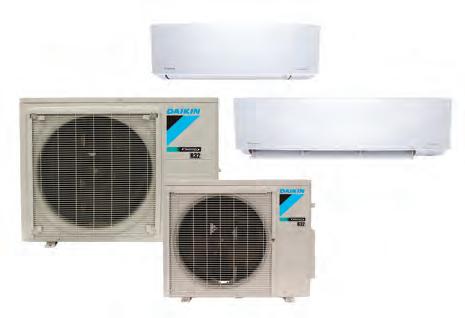
Daikin’s OTERRA single-zone heat pumps are available in 115V models with the new SIGNA flareless adaptor for copper pipe connections. The compact, lightweight units are a solution for applications that cannot accommodate a 208/230V circuit. The heat pumps cool from 10°C to 46°C and heat from -15°C to 18.3°C, and operate as low as 25 dB(A) for indoor units and 46 dB(A) for outdoor units. Features include anti-corrosion treatment on cooling coils, automatic defrost cycle, detachable drain pan, and low-GWP R-32 refrigerant. Available in 0.75 to 1 ton units with 9,000 to 12,000 BTU/hr heating capacities.
www. daikincomfort.com
Check out our other products!





Simple and adjustable clamps that snap in and out of place for on-the-fly adjustments. Comes in 5 different sizes to adapt to a variety of line sets.
Rough in return air frames in a snap. Filtered and Windowed models keep your return system clean during construction and pair perfectly with our Snap Grilles for the easiest solution on the market.
Get perfect, clean looking results on exterior wall penetrations. Plus, an air tight seal and zero snags when running piping and wiring through walls.

• Industry Experts
• Contractors
• Engineers
• Consultants
• Agents
• Wholesalers
• Tradespeople
• Educators
• Students


• Presentations and workshops with Industry Experts
• Learn about the future of hydronics
• Visit our Trade Show
• Networking
• Panel discussions
• See where the industry is going
• Everything
• Expert advice
• Smart solutions



The AIRSTAGE Centauri single-zone heat pump from Fujitsu is the newest addition to the H-Series R-32 heat pump line. With capacities from 9,000 to 48,000 BTU/hr, the heat pump offers flexible indoor options including ceilingsuspended, compact cassette, circular-flow cassette, and mid-static ducted units. Using R-32 refrigerant, the unit offers a COP up to 4.04, efficiencies up to 26.3 SEER2, and cooling in outdoor temperatures as low as -20.5°C. Side service panels and selfdiagnostics with error codes simplify maintenance. www.
fujitsugeneral.com

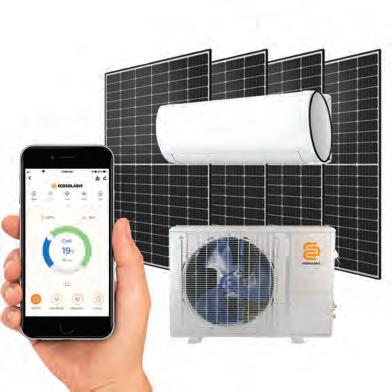
EcoSolaris hybrid solar air conditioning and heat pump systems cut energy costs while reducing environmental impact. Heat pumps can run on solar, grid, or both, offering flexibility for a range of applications, including residential, commercial, and remote settings. Certified by ENERGY STAR and Intertek, EcoSolaris systems use R-32 refrigerant, and can be controlled via WiFi by a smart phone. Heat pumps are available in 12,000 BTU and 18,000 BTU sizes. www. solarcooling.ca

Smardt’s ECO AeroMod modular air-cooled chiller platform allows owners of commercial and industrial buildings to scale cooling capacity. Part of the Smardt ECO line, AeroMod is available in 30 and 40-ton modules, to connect up to 10 units for a total of 400 tons. Other features include low-GWP R-454B refrigerant, dual variable-speed scroll compressors per unit, EC fans with advanced airflow control, and all-aluminum microchannel condenser coils. Redundancy is up to 20 compressors across 10 modules, with turndown to less than two per cent. www. smardt.com

+37%
That's how much Johnso n & Johnson grew their revenue between 2023–2024.
Want results like this? Jason Johnson attributes much of his company's growth to being a member of Nexstar Network
“Growth had to happen within us for our organization to grow. We were hungry for what Nexstar was offering—they have a process for every aspect of the business. Nexstar gave us the structure for how to grow, for what to do. And the network itself has been awesome.”
– JASON JOHNSON
“We’ve grown exponentially since joining Nexstar. When you want to become successful, you hang around a successful crowd.”
– MARISSA JOHNSON



UNLOCK YOUR GROWTH WITH NEXSTAR NETWORK TODAY. SCAN TO LEARN MORE!
The Government of Ontario will expand its Skills Development Fund (SDF) by $955 million over the next three years. Funding includes $705 million in the 2025 Ontario Budget to train more workers through the SDF Training Stream, as well as $150 million over three years to support increased demand in the SDF Capital Stream, which will help organizations build and expand training facilities.
In the 2025 Ontario budget the province announced an additional $600 million to the Invest Ontario Fund to further support job creation, as well as an additional $50 million in 2025–26 to support vocational and skills training to help individuals transition to indemand jobs. In addition, the government announced it will launch a new Ontario Immigrant Nominee Program (OINP) employer portal this summer. Employer applicants will be able to submit their applications directly and electronically to the portal.

was recommended by construction industry stakeholders during consultations held as part of the Working for Workers Five Act, 2024 Cardiac events such as cardiac arrest are a leading cause of workplace fatalities, and construction workers are at a higher risk. Ministry of Labour, Immigration, Training and Skills Development data show that more than 15 per cent of inspection reports to do with cardiac or heart attacks were in the construction sector.
AEDs can restore normal rhythm to a person’s heart if they are in cardiac arrest and can improve survival rates by 50 per cent if used together with CPR in the first few minutes after a cardiac arrest. According to the government, the cost of an AED averages $2,300. This cost would be offset through a proposed program through WSIB. If passed, the proposal would be the first of its kind in Canada.
The provincial government has also proposed an amendment requiring automatic external defibrillators (AEDs) at construction sites expected to last at least three months, or with 20 or more workers. The move
24_001365_Safety_Worker_HalfHoriz_US_MXsp Mod: May 22, 2025 9:43 AM Print: 06/17/25 page
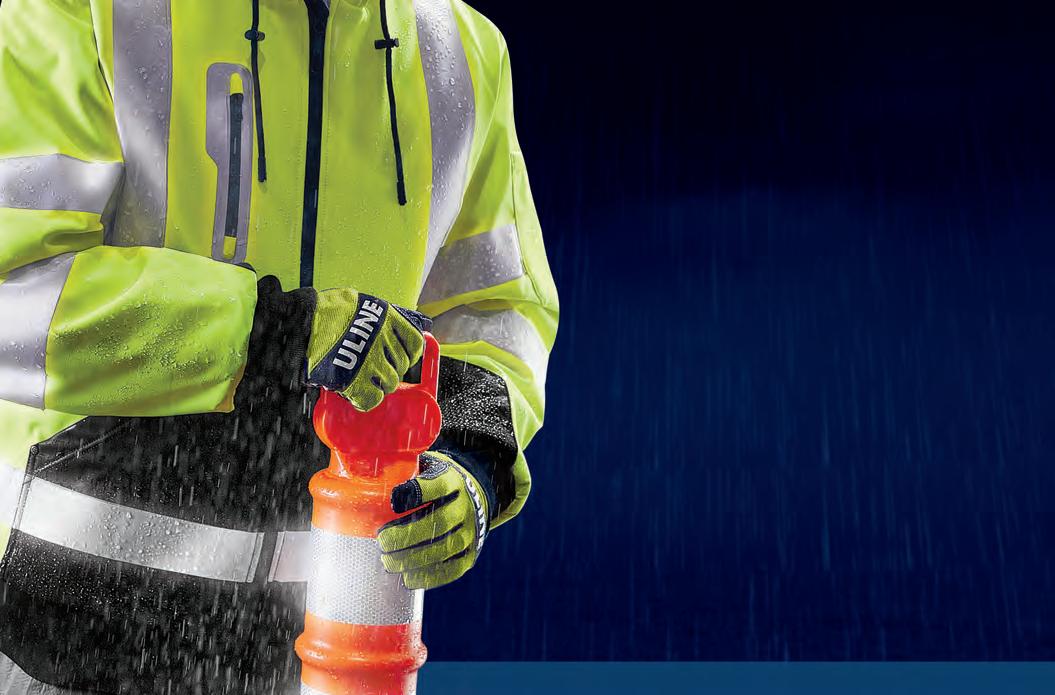





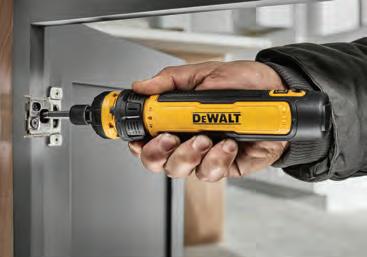
DEWALT’s 14-piece cordless screwdriver set with Flexdrive
Control offers a compact design, 360⁰ collar for seamless slideto-drive control, LED workspace illumination, and six-stage torque adjustment to deliver up to 680 machine screws per charge. The set features a rechargeable 2Ah integral battery that can be recharged in 60 minutes with a USB-C charger or connector. www.
dewalt.ca

Slate Safety offers the Band V2, a wearable physiological monitoring system for safety and heat-stress prevention. The technology is rugged, easy to use, and made for individuals working in physically demanding roles. The system monitors exertion, heart rate, core body temperature, fall detection and more, with real time alerts to users with LED lights and vibration. The Band V2 features a 24- to 100-hour battery life depending on configuration, configurable GPS and indoor location tracking, and embedded cellular connectivity. www. slatesafety.com

The Tool Tote from Knipex is 8 5/8 in. wide by 16 1/8 in. high and able to handle up to 33 lbs. when loaded. The tote features rigid interior walls and water-resistant soft bottom with plastic feet, and three compartments and 25 internal and external pockets which are accessible from all sides. Also included are a tape measure clip, electrical tape thong, padded removable shoulder strap, and several elastic loops.
www.
knipex-tools.com
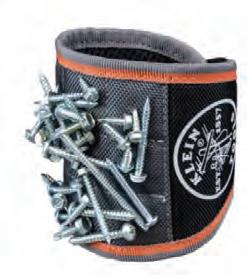

The Tradesman Pro magnetic wristband features rare earth magnets powerful enough to keep wire nuts, screws, bits, nails and other small parts nearby. The wristband is made with 1680d ballistic material and has a breathable mesh interior. It is contoured with an adjustable closure to fit most wrist sizes comfortably. It will also fit around a belt or tool bag.
www.
kleintools.com
Makita’s 18V LXT Coffee Maker makes coffee fast and easy on the jobsite. The coffee maker has a permanent drip filter for use with coffee pods or grounds without needing additional filters, has a removable water tank for easy filling, and can be used with a 12V MAX CXT or 18V Li-Ion battery platforms. Other features include boil dry protection, battery protection system, and carrying handle. Comes with a Makita stainless cup, mug lid, and measuring spoon.
www. makita.ca

When business slows down the first instinct is often to cut costs and let’s be honest − marketing often lands on the chopping block first. But here’s the truth: if you want to come out stronger on the other side of a downturn, staying visible is non-negotiable. The businesses that thrive in uncertain times are those that lean in while others retreat.
Here’s how to recession-proof your marketing strategy and keep growing − even when the market gets tight.
When your competitors pull back, your message has a better shot at cutting through the noise. This isn’t the time to disappear − it’s your chance to stand out. Your future customers are still searching, comparing, and planning, even if they’re not quite ready to act. The brands they consistently see in search results, on trucks, on social, and in their inboxes, are the ones they’ll remember when it’s time to pull the trigger.
Try this: Keep your Google Business Profile up to date. Post on social, even if it’s just once a week. Respond to reviews − even the cranky ones. Every small touchpoint keeps you top of mind.
Your brand is more than just a logo. It’s the reputation you’ve built and the feeling people get when they interact with your business. Especially in tight times, people want to work with businesses they trust.
Ask yourself:
• Are your colours and visuals consistent across your website, flyers, trucks, and social posts?
• Does your messaging sound clear, confident, approachable?
• If someone lands on your site, would they instantly know why they should choose you?
Quick win: Even colour makes a difference. Blues and greys communicate trust and professionalism, while bold colours such as red or orange can help you stand out, as long as you’re consistent.

Paul Bies
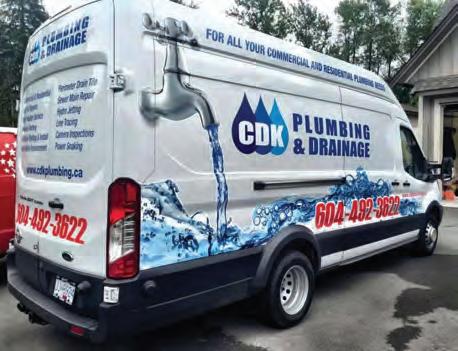

You don’t need a huge spend to make an impact. Focus on what gives you the most return for your dollar:
• Google Local Services Ads (LSAs): Pay per lead, not per click. You also receive the Google Guarantee badge, which is great for building credibility.
• Email campaigns: Have a customer list? Stay in
Paul Bies is co-founder and president of Mystique Brand Communications (mystique. ca) in Toronto, ON. His mission is to empower businesses and to share insights that provide valuable perspectives for their success. As the son of an HVAC entrepreneur, he understands the business landscape and is committed to helping MB readers thrive.
touch with short updates, seasonal tips, or simple “We’re here if you need us” notes.
• Yard signs and truck decals: Your best billboard might be your own vehicle.
• Partner referrals: Build relationships with complementary trades, such as real estate agents, electricians, and property managers. They talk to your future clients all the time.
Your website doesn’t just need to look good, it needs to work. Think of it as your 24/7 salesperson. Ask yourself:
• Is there a clear next step on every page?
• Are you offering anything useful to grab attention (such as a checklist or quick guide)?
• Do you have trust signals (such as reviews, certifications, or “as seen on” badges)?
• Is it fast and mobile-friendly?
Pro move: Add a live chat or quick form. Some folks don’t want to call. They just want to ask a question and move on.
AI isn’t just changing how people find information, it’s transforming how they search. Google I/O 2025 just wiped out the entire playbook. If your competitors adapt in the next 90 days, they’ll be the ones gaining visibility while others get buried.
Here’s the reality check:
customers make buying decisions. Poor images or unclear product data? You’re out.
The good news? People are using Google more than ever. AI Overviews are driving over 10 per cent growth in search volume. But this means more competition for fewer visible spots.
Talk to your marketing team or agency about how these changes affect your current strategy. Ask for an honest assessment of how your visibility, content, and ads are performing under the new AI-powered search model.
Staying ahead means adapting fast and getting the right help when you need it.
Action step: Make sure your website is optimized for topic authority, your images are sharp, and your ad content is tightly aligned with what people are actually asking.
Content builds trust, helps your SEO, and gives your brand a voice. You don’t have to post daily, just be consistent and provide useful content.
Here’s what works:

• Your old SEO strategy? It’s on life support. Google’s Deep Search now handles complex, multi-step queries, making keyword-chasing strategies obsolete. What matters now is topic-level optimization and clear, trustworthy content.
• Ads are showing up inside AI-generated answers. That means if you’re not aligning your content and ad strategy with this new format, you’ll be invisible.
• Google’s AI Shopping Partners are rewriting how
Answer common client questions in blog posts.
• Share before-and-after project photos.
• Post quick video tips about seasonal issues or maintenance ideas.
Then reuse that content: post it to your newsletter, slice it up for social, or feature it on your homepage.
Be smart with your spend by utilizing free tools such as Google Analytics or a simple spreadsheet to determine the source of your leads. If something’s not delivering, pause it and shift your budget to what is.
























www.hotwatercanada.ca






www.camus-hydronics.com






www.daikincomfort.com www.flocor.ca

































































































www.watts.ca





National Backflow Prevention Day
August 16 North America watts.com
Japan Build Osaka August 27 – 29 Osaka, Japan japan-build.jp/Osaka
RE+
September 8 – 11 Las Vegas, NV re-plus.com
NADCA Fall Technical Conference
September 12 – 14 Minneapolis, MN nadca.com
CHES National Conference September 14 – 16 Calgary, AB ches.org
NSC Safety Congress & Expo
September 15 – 17 Denver, CO congress.nsc.org
HRAI Annual Conference & AGM
September 21 – 22 Halifax, NS hrai.ca
Woodrise September 22 – 25 Vancouver, BC cwc.ca


















Atlantic Heat Pump Symposium
September 23 Halifax, NS heatpumpsymposium.ca/halifax
IEQ Conference
September 24 – 26 Montreal, QC ashrae.org
ASPE Tech Symposium
September 24 – 28 Orlando, FL aspe.org
Road Hockey to Conquer Cancer September 27 Vaughan, ON roadhockeytoconquercancer.ca
Canadian Hydronics Conference September 30 – October 1 Montreal, QC ciph.com
Canada Home Energy Justice Conference October 8 – 9 Ottawa, ON efficiencycanada.org
Women in the Boiler Industry Symposium
October 15 – 17 Minneapolis, MN abma.com/WIBI
AIM/R 53rd Annual Conference October 20 – 23 Scottsdale, AZ aimr.net









RETA National Conference
October 20 – 24 Spokane, WA reta.com
BUILDEX Alberta
October 22 – 23 Calgary, AB buildexalberta.com
ASHRAE Building Decarbonization Conference
October 22 – 24 Chicago, IL ashrae.org
CGA Energy Nexus & Annual Technical Conference October 27 – 30 Calgary, AB cga.ca
The Engineering Conference November 3 – 4 Collingwood, ON ospe.on.ca
Greenbuild
November 4 – 7 Los Angeles, CA informaconnect.com/greenbuild
CIPHEX West + Electrical Learning Expo West November 5 – 6 Vancouver, BC ciphexwest.ca
When a homeowner’s HVAC system fails, they face a tough reality: Shell out thousands for a new system or suffer without proper heating and cooling. For your HVAC business, this moment represents both an opportunity and a challenge.
How do you convert these emergency calls into sales when customers balk at the price tag? The answer is smart consumer financing that removes the payment barrier immediately.
Think about your last 10 sales that fell through. How many customers wanted your solution but couldn’t stomach the upfront cost? Consumer financing transforms those lost opportunities into completed jobs by breaking large purchases into manageable monthly payments.
When your techs arrive at a home with a dead HVAC system, they’re not just diagnosing a mechanical problem − they’re entering a financial decision moment. Equipping them with the right financing tools means they can offer solutions rather than just quotes.

When your technician can offer instant financing approval right from their tablet or phone, you eliminate the “I need to think about it” response. Customers make decisions based on monthly payments, not total price. A $12,000 heat pump system becomes a much more palatable $200 monthly payment.
With fully integrated financing tools in your field service software, technicians can:
• Present multiple financing options in seconds
• Get immediate approval while still in the customer’s home
• Complete paperwork digitally without complica ted forms
• Close the sale before leaving the property
Prequalification is the secret weapon for smoother sales conversations. Before diving into system options, help homeowners understand what they can afford. This
Fully integrated financing tools in field service software allow technicians to get immediate approval while still at the customer’s home.
simple step changes everything about the sales process. When a homeowner pre-qualifies for financing, both you and they know exactly where the budget stands. No more wasted time proposing systems they can’t afford or struggling to decide between options. The technician can focus on recommending the best solution that fits within the customer’s approved amount.
Prequalification also builds trust. When homeowners see you’re working within their financial boundaries rather than pushing them beyond their means, they view you as a partner and not just another contractor trying to upsell them. This trust translates directly into higher closing rates and better customer relationships.
The monthly payment difference between a standard and premium system is often minimal. When customers focus on the $30 to $50 additional monthly cost rather than the $2,000 to $3,000 price difference, upgrading becomes an easy decision.
Technicians can demonstrate how premium systems deliver better comfort and energy savings that often offset the slight increase in monthly payments. This transforms your average ticket size without requiring aggressive sales tactics.
Many HVAC businesses have tried financing programs that created more headaches than sales. The key is finding a solution that integrates seamlessly with your existing workflow.
The most effective financing programs offer:
• Simple mobile application process (less than two minutes)
• High approval rates across credit profiles
• Transparent terms without predatory practices
• Instant funding to your business account
• Flexible financing options such as zero per cent f or 48 months or 9.99 per cent f or 72 months
• Transparent fee structures that protect your mar gins
When your financing program is fully integrated with your field service software, there’s no juggling between separate apps or platforms. Technicians can present options, secure approval and complete the sale within the same system they use for estimates and work orders.
When you implement integrated financing, you’ll see immediate changes in your business metrics. Jobs that previously ended with “I’ll think about it” convert to sales. Average ticket sizes grow as customers focus on affordable monthly payments rather than total cost. Your cash flow improves with immediate payment processing rather than waiting for customer financing to come through other channels.
Most importantly, your technicians gain confidence knowing they can offer solutions that work for every budget − turning them from repair technicians into trusted advisors.

Presenting immediate, realistic options that work for your customers’ budgets increases trust.
By Roland Ligtenberg
In today’s economy, homeowners are increasingly budgetconscious. When your competitors can only say “here’s the price,” while you can say “here’s how we make this work for your budget,” you’ve created an undeniable advantage. With integrated financing, your business gets paid in full immediately while your customers enjoy the flexibility of monthly payments. There’s no waiting for cheques to clear or chasing down payments − just completed jobs and satisfied customers.
With integrated financing, your business gets paid in full immediately while your customers enjoy the flexibility of monthly payments

If your current field service management software already includes built-in financing options, you’re leaving money on the table by not utilizing this feature. Activate it, train your team and start presenting financing options on every job.
Consumer financing isn’t just a payment option, it’s a sales strategy that directly impacts your bottom line. By making it easy for customers to say “yes,” you’re building a more profitable, resilient HVAC business that can weather any economic conditions.
Roland Ligtenberg is a co-founder of Housecall Pro, a field service management platform with a suite of features, solutions, reports, and AI capabilities.


508,250
Tonnes of copper in concentrate produced in Canada in 2023, almost half of that from BC, says NRCan.
32
Per cent of copper globally that was used for equipment manufacturing in 2022, making it the number-one use, followed by building construction at 26 per cent.
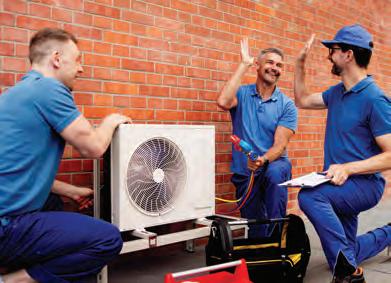
89
Per cent of respondents in Randstad’s Workmonitor 2025 report who said they wanted their workplace to feel like a community.
31
Per cent of employers who mandate their employees are in the office five days a week.
42
Per cent of respondents who said they have quit a job due to a toxic workplace.
697,000
1.6
Millions of people in Canada employed in the construction sector in 2024, according to BuildForce Canada’s 2025-2034 Construction and Maintenance Looking Forward report. 15

Per cent residential construction investment is expected to rise over the next decade compared to 2024 levels. Non-residential construction investment is expected to grow by under two per cent by 2034.
20
Per cent median real hourly wages grew from 1981 to 2024, with most of the growth after 2003, according to Statistics Canada.
24
Per cent median real wages for full-time jobs increased by 2024, compared to just six per cent growth for part-time jobs.
90
Per cent of the median hourly wage of men aged 25 to 54 employed full time that women aged 25 to 54 earned in 2024. Women earned just 75 per cent of the median wage of men in 1981.
32.9
Per cent average annual heat pump shipments to Alberta grew over the past five years, more than any other province, according to 440 Megatonnes, a project of the Canadian Climate Institute.
3.4


Per cent furnace shipments across Canada fell on average annually across Canada over the past five years, or over 50,000 units. 50+
Number of heat pumps shipments per one furnace shipment in Quebec and Atlantic Canada.
Number of jobs directly and indirectly linked to Canada’s energy sector in 2023, representing 3.5 per cent of total employment, according to the Energy Fact Book 2024-2025.

Proudly Canadian. Always have been.
In times of uncertainty, where you choose to do business matters more than ever.
+osb ™ is 100% Canadian owned and operated, with manufacturing and operational facilities right here at home.
We’ve proudly supported Canadian plumbers for over 50 years—and we’re not going anywhere.
Count on us to keep Canadian jobs, innovation, and supply chains strong.
Now more than ever, it pays to buy Canadian.
Thank-you for your support.
OSB
osb.ca
•
•
•
•
•


